New study offers hope for a rare and devastating eye cancer

After more than a decade studying a rare eye cancer that produces some of the hardest-to-fight tumors, researchers from University of Pittsburgh Medical Center have found a treatment that works on some patients and, more importantly, a tool that can predict when it is likely to succeed.
The work, published in Nature Communications, is being validated in a clinical trial involving at least 30 patients. It could pave the way for similar methods designed to overcome one of the enduring frustrations of cancer care.
Because tumors differ, not only between patients but even inside the same patient, a treatment that works on one mass may fail on another, even when both are of the same cancer type.
The researchers in Pittsburgh tackled this problem in uveal melanoma, an eye cancer that afflicts only 5 people in a million, but that half the time spreads to other parts of the body, often the liver. The median survival once uveal melanoma has spread has been less than seven months, according to a 2018 study in the journal JAMA Ophthalmology.
“We chose this because it was one of the only cancers that 10 years ago when we started, there was nothing approved for it,” said Udai Kammula, who led the study and directs the Solid Tumor Cell Therapy Program at UPMC Hillman Cancer Center in Pittsburgh.
Scientists had long speculated that the reason uveal melanoma is so tough to fight is that something helps the tumor keep out T cells, a key part of the body’s immune system that develops in bone marrow. However, previous studies by Kammula and his colleagues showed that uveal melanoma tumors actually have T cells inside, and they are turned on.
The problem? The cells lie dormant instead of multiplying and reaching numbers large enough to overwhelm the tumor.
The culprit appears to reside somewhere inside the tumor’s ecosystem of cells, molecules and blood vessels, known formally as the tumor’s “microenvironment.” Kammula compares this ecosystem to the infrastructure that supports a city. Something in that infrastructure helps protect uveal melanoma tumors by preventing the critical T cells from multiplying.
“Ultimately, if we’re going to get rid of cancer, we have to get rid of this infrastructure,” Kammula said.

A tool for predicting success
He and his colleagues have had some success using a treatment known as adoptive cell therapy, which was developed in the 1980s by Steven Rosenberg at the National Institutes of Health.
The treatment involves removing the T cells from the tumor, where they have been unable to proliferate. Scientists then take those T cells and grow them outside the body in a lab dish. They treat patients with chemotherapy to kill off the last of their old immune systems. Finally, they reinfuse the lab-grown T cells into the patient’s blood stream and the cells, now in much greater numbers, go on to attack the tumor.
In this treatment, the T cells are often referred to as tumor-infiltrating leukocytes, or TILs.
Kammula said his team has found that tumors shrink partially or completely in about 35 percent of patients who receive the treatment. But they wanted to know why it doesn’t work in the majority of cases, and whether there might be some way to predict beforehand when it will succeed.
To find out, the researchers analyzed samples from 100 different uveal melanoma tumors that had spread to different parts of the body in 84 patients, seeking to examine all of the tumors’ genetic material.
“We basically put the tumor biopsy in a blender that had the stroma [supportive tissue], the blood vessels, the immune cells, the tumor cells. It had everything,” Kammula said, explaining that they then analyzed all of the tumor’s genetic material.
They found 2,394 genes that could have helped make the tumor susceptible to treatment, some of them genes that experts would regard as “the usual suspects” and others that were unexpected. Using this long list of genes, the scientists searched for characteristics that they shared.
The genes were predominantly involved in helping the body defend itself against viruses, bacteria and other foreign invaders by removing the invaders and helping tissue heal. Kammula and the study’s lead author, Shravan Leonard-Murali, a postdoctoral fellow in the lab, used the different activity levels of these genes to develop a clinical tool.
The tool, known as a biomarker, assigns a score to a uveal melanoma tumor based on the likelihood that it will respond well to the treatment ― removing T cells, growing them outside the body, then reinfusing them.
So far, Kammula said, the biomarker has been “extremely good,” in predicting when the treatment will be effective, though he added, “these findings will need confirmation in the current ongoing clinical trial.”
“I thought it was somewhat of a tour de force, honestly,” said Eric Tran, an associate member of the Earle A. Chiles Research Institute, a division of Providence Cancer Institute in Portland, Ore. Tran did not participate in the study.
He said that while it will be important to validate these results, “I was certainly encouraged by their studies. And from my perspective, I wonder if that sort of strategy can be deployed in other cancers.”
Ryan J. Sullivan, an oncologist at Massachusetts General Hospital and associate professor at Harvard Medical School who was not involved in the study, called the team’s work “timely” and said “it is even more significant that they appear to have a [tool] that appears to predict which patients will benefit.”
The team at UPMC is already investigating possible wider application of both the treatment and the biomarker in a second clinical trial that involves a dozen different cancers.

Vitamin D alters mouse gut bacteria to give better cancer immunity
Researchers at the Francis Crick Institute, the National Cancer Institute (NCI) of the U.S. National Institutes of Health (NIH) and Aalborg University in Denmark, have found that vitamin D encourages the growth of a type of gut bacteria in mice which improves immunity to cancer.
Reported today in Science , the researchers found that mice given a diet rich in vitamin D had better immune resistance to experimentally transplanted cancers and improved responses to immunotherapy treatment. This effect was also seen when gene editing was used to remove a protein that binds to vitamin D in the blood and keeps it away from tissues.
Surprisingly, the team found that vitamin D acts on epithelial cells in the intestine, which in turn increase the amount of a bacteria called Bacteroides fragilis . This microbe gave mice better immunity to cancer as the transplanted tumours didn't grow as much, but the researchers are not yet sure how.
To test if the bacteria alone could give better cancer immunity, mice on a normal diet were given Bacteroides fragilis . These mice were also better able to resist tumour growth but not when the mice were placed on a vitamin D-deficient diet.
Previous studies have proposed a link between vitamin D deficiency and cancer risk in humans, although the evidence hasn't been conclusive.
To investigate this, the researchers analysed a dataset from 1.5 million people in Denmark 1 , which highlighted a link between lower vitamin D levels and a higher risk of cancer. A separate analysis of a cancer patient population also suggested that people with higher vitamin D levels 2 were more likely to respond well to immune-based cancer treatments.
Although Bacteroides fragilis is also found in the microbiome in humans, more research is needed to understand whether vitamin D helps provide some immune resistance to cancer through the same mechanism.
Caetano Reis e Sousa, head of the Immunobiology Laboratory at the Crick, and senior author, said: "What we've shown here came as a surprise -- vitamin D can regulate the gut microbiome to favour a type of bacteria which gives mice better immunity to cancer.
"This could one day be important for cancer treatment in humans, but we don't know how and why vitamin D has this effect via the microbiome. More work is needed before we can conclusively say that correcting a vitamin D deficiency has benefits for cancer prevention or treatment."
Evangelos Giampazolias, former postdoctoral researcher at the Crick, and now Group Leader of the Cancer Immunosurveillance Group at the Cancer Research UK Manchester Institute, said: "Pinpointing the factors that distinguish a 'good' from a 'bad' microbiome is a major challenge. We found that vitamin D helps gut bacteria to elicit cancer immunity improving the response to immunotherapy in mice.
"A key question we are currently trying to answer is how exactly vitamin D supports a 'good' microbiome. If we can answer this, we might uncover new ways in which the microbiome influences the immune system, potentially offering exciting possibilities in preventing or treating cancer."
Romina Goldszmid, Stadtman Investigator in NCI's Center For Cancer Research, said: "These findings contribute to the growing body of knowledge on the role of microbiota in cancer immunity and the potential of dietary interventions to fine-tune this relationship for improved patient outcomes. However, further research is warranted to fully understand the underlying mechanisms and how they can be harnessed to develop personalized treatment strategies."
This research was funded by Cancer Research UK, the UK Medical Research Council, the Wellcome Trust, an ERC Advanced Investigator grant, a Wellcome Investigator Award, a prize from the Louis-Jeantet Foundation, the Intramural Research Program of the NCI, part of the National Institutes of Health, CCR-NCI and the Danish National Research Foundation.
Research Information Manager at Cancer Research UK, Dr Nisharnthi Duggan said: "We know that vitamin D deficiency can cause health problems, however, there isn't enough evidence to link vitamin D levels to cancer risk. This early-stage research in mice, coupled with an analysis of Danish population data, seeks to address the evidence gap. While the findings suggest a possible link between vitamin D and immune responses to cancer, further research is needed to confirm this.
"A bit of sunlight can help our bodies make vitamin D but you don't need to sunbathe to boost this process. Most people in the UK can make enough vitamin D by spending short periods of time in the summer sun. We can also get vitamin D from our diet and supplements. We know that staying safe in the sun can reduce the risk of cancer, so make sure to seek shade, cover up and apply sunscreen when the sun is strong."
- Breast Cancer
- Prostate Cancer
- Colon Cancer
- Lung Cancer
- Shiitake mushroom
- Cervical cancer
- Ovarian cancer
- Pernicious anemia
Story Source:
Materials provided by The Francis Crick Institute . Note: Content may be edited for style and length.
Journal Reference :
- Evangelos Giampazolias, Mariana Pereira da Costa, Khiem C. Lam, Kok Haw Jonathan Lim, Ana Cardoso, Cécile Piot, Probir Chakravarty, Sonja Blasche, Swara Patel, Adi Biram, Tomas Castro-Dopico, Michael D. Buck, Richard R. Rodrigues, Gry Juul Poulsen, Susana A. Palma-Duran, Neil C. Rogers, Maria A. Koufaki, Carlos M. Minutti, Pengbo Wang, Alexander Vdovin, Bruno Frederico, Eleanor Childs, Sonia Lee, Ben Simpson, Andrea Iseppon, Sara Omenetti, Gavin Kelly, Robert Goldstone, Emma Nye, Alejandro Suárez-Bonnet, Simon L. Priestnall, James I. MacRae, Santiago Zelenay, Kiran Raosaheb Patil, Kevin Litchfield, James C. Lee, Tine Jess, Romina S. Goldszmid, Caetano Reis e Sousa. Vitamin D regulates microbiome-dependent cancer immunity . Science , 2024; 384 (6694): 428 DOI: 10.1126/science.adh7954
Cite This Page :
Explore More
- Long Snouts Protect Foxes Diving Into Snow
- Promising Experimental Type 1 Diabetes Drug
- Giant, Prehistoric Salmon Had Tusk-Like Teeth
- Plants On the Menu of Ancient Hunter-Gatherers
- Unexpected Differences in Binary Stars: Origin
- Flexitarian: Invasive Species With Veggies
- T. Rex Not as Smart as Previously Claimed
- Asteroid Ryugu and Interplanetary Space
- Mice Think Like Babies
- Ancient Maya Blessed Their Ballcourts
Trending Topics
Strange & offbeat.

Study reveals cancer vulnerabilities in popular dog breeds
Medium-sized pooches face greater risks
Medium-sized dogs have a higher risk of developing cancer than the very largest or smallest breeds, according to a UC Riverside study.

The study, published in the Royal Society Open Science, set out to test a model of how cancer begins. This model, called the multistage model, predicts that size is a risk factor for cancer. As it turns out, it is, but only when considering size variation within a single species.
It is common for cells to acquire errors or mutations as they divide and form copies of themselves. Bigger animals, and those that live longer, have more cells and a longer lifespan during which those cells divide. According to the multistage model, that means they have more opportunities to acquire mutations that eventually become cancer.
“The question that arises is why, then, don’t we get more cancer than a mouse? We don’t. There is no increase in cancer risk as animals increase in size from species to species,” said UC Riverside evolutionary biologist and study author Leonard Nunney.
However, this isn’t true for animals of the same species. “Studies on humans show that tall people get more cancer than short people. It’s about a 10% increase over the baseline risk for every 10 centimeters in height,” Nunney said.
For more insight into these risk factors, Nunney required a species with a bigger difference between the smallest and biggest individuals.
“Testing this in dogs is even better because you can compare a tiny chihuahua to a great Dane. That’s a 35-fold difference in size, and people can’t come close to that,” Nunney said.
Surveying their mortality rates with three different data sets, Nunney found the smallest dogs, including Pomeranians, miniature pinschers, shih tzus and chihuahuas have about a 10% chance of dying from cancer.
By comparison, many relatively large dogs, such as Burmese mountain dogs, have more than a 40% chance of death from cancer.
There were some outliers in the study. Flat-coated retrievers had the highest mortality from cancer, getting a type of sarcoma with higher frequency than they should have for their size. Scottish terriers seemed to get more cancer than other small dog breeds. “Terriers in general get more cancer than expected for their size,” Nunney said. In general, however, the study supports the idea that size is a major risk factor for cancer.
However, the very largest breeds, such as great Danes, have less cancer than medium-sized breeds. That is because of a well-known but as yet unexplained phenomenon: the life expectancy of dogs gets shorter with size.
“For every pound increase in typical breed size you lose about two weeks of life. A very big dog, you’re lucky if they live past nine years, whereas small dogs can go about 14,” Nunney said. Cancer is predominantly a disease of old age so by having a reduced lifespan the largest dogs have a reduced cancer risk.
According to the study, dog breeds are a clear fit with the multistage model of cancer acquisition that says larger size and longer lives offer more opportunities for cells to mutate. “I was surprised how well dogs fit the model,” Nunney said. “But that doesn’t happen when you compare a mouse to an elephant or a human to a whale. So, does that undermine the model in some way?”
Nunney believes that an animal’s ability to avoid cancer increases with the size of the species. “My argument is that preventing cancer is an evolving trait, so a whale will have more ways of preventing cancer than a mouse does,” he said.
While data are limited about the occurrences of cancer in whales, there is more information about rates in elephants, because they are kept in zoos.
“Elephants don’t get much cancer. Their ancestors, long before mastodons, were much smaller, so how, en route to today’s size, did they avoid cancer?” he wondered. “The secret to preventing cancer could lie within the biology of larger animals.”
(Cover image: feedough/iStock/Getty)
Media Contacts
Related articles.

Federal grant to advance brain stroke research

From polluting waste to sportswear

To find life in the universe, look to deadly Venus
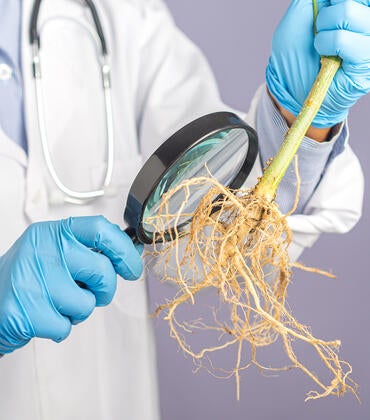
Solving antibiotic and pesticide resistance with infectious worms
Brain and Spinal Cord Tumor Research Results and Study Updates
See Advances in Brain and Spinal Cord Tumor Research for an overview of recent findings and progress, plus ongoing projects supported by NCI.
The activity of 34 genes can accurately predict the aggressiveness of meningiomas, a new study shows. This gene expression signature may help oncologists select the best treatments for people with this common type of brain cancer than they can with current methods.
An NCI-supported study called OPTIMUM, part of the Cancer Moonshot, was launched to improve the care of people with brain tumors called low-grade glioma in part by bringing them into glioma-related research.
Treating craniopharyngioma often requires surgery, radiation therapy, or both. But results of a study suggest that, for many, combining the targeted therapies vemurafenib (Zelboraf) and cobimetinib (Cotellic) may substantially delay, or even eliminate, the need for these treatments.
In a large clinical trial, vorasidenib slowed the growth of low-grade gliomas that had mutations in the IDH1 or IDH2 genes. Vorasidenib is the first targeted drug developed specifically to treat brain tumors.
Researchers have found that the aggressive brain cancer glioblastoma can co-opt the formation of new synapses to fuel its own growth. This neural redirection also appears to play a role in the devastating cognitive decline seen in many people with glioblastoma.
Two companion studies have found different forms of some brain tumors, diffuse midline glioma and IDH-mutant glioma, become dependent for their survival on the production of chemicals called pyrimidines. Clinical trials are planned to test a drug that blocks pyrimidine synthesis in patients with gliomas.
The combination of dabrafenib (Tafinlar) and trametinib (Mekinist) shrank more brain tumors, kept the tumors at bay for longer, and caused fewer side effects than chemotherapy, trial results showed. The children all had glioma with a BRAF V600 mutation that could not be surgically removed or came back after surgery.
Two separate but complementary studies have identified a new way to classify meningioma, the most common type of brain tumor. The grouping system may help predict whether a patient’s tumor will grow back after treatment and identify new treatments.
A nanoparticle coating may help cancer drugs reach medulloblastoma tumors in the brain and make the treatment less toxic. Mice treated with nanoparticles containing palbociclib (Ibrance) and sapanisertib lived substantially longer than those treated with either drug alone.
A new test could potentially be used to identify children treated for medulloblastoma who are at high risk of their cancer returning. The test detects evidence of remaining cancer in DNA shed from medulloblastoma tumor cells into cerebrospinal fluid.
Standard radiation for medulloblastoma can cause long-term damage to a child’s developing brain. A new clinical trial suggests that the volume and dose of radiation could be safely tailored based on genetic features in the patient’s tumor.
In people with glioblastoma and other brain cancers, steroids appear to limit the effectiveness of immunotherapy drugs, a new study shows. The findings should influence how steroids are used to manage brain tumor symptoms, researchers said.
Results from two studies show that a liquid biopsy that analyzes DNA in blood accurately detected kidney cancer at early and more advanced stages and identified and classified different types of brain tumors.
A method that combines artificial intelligence with an advanced imaging technology can accurately diagnose brain tumors in fewer than 3 minutes during surgery, a new study shows. The approach can also accurately distinguish tumor from healthy tissue.
Glioblastoma cells sneak many copies of a key oncogene into circular pieces of DNA. In a new NCI-funded study, scientists found that the cells also slip several different genetic “on switches” into these DNA circles, helping to fuel the cancer’s growth.
Men and women with glioblastoma appear to respond differently to standard treatment. A new study identifies biological factors that might contribute to this sex difference.
A liquid biopsy blood test can detect DNA from brain tumors called diffuse midline gliomas, researchers have found. This minimally invasive test could be used to identify and follow molecular changes in children with these highly lethal brain tumors.
Despite continued efforts to develop new therapies for glioblastoma, none have been able to improve how long patients live appreciably. Despite some setbacks, researchers are hopeful that immunotherapy might be able to succeed where other therapies have not.
Progress against the brain cancer glioblastoma has been slow. Drs. Mark Gilbert and Terri Armstrong of NCI’s Neuro-Oncology Branch discuss why and what’s being done to change that.
Studies presented at the 2017 AACR annual meeting suggest that therapies which take advantage of the mutations in the IDH gene may be more effective than drugs that block it.
- OU Homepage
- The University of Oklahoma
OU Health Stephenson Cancer Center Expanding to Tulsa to Serve Northeast Oklahoma

TULSA, OKLA. – OU Health Stephenson Cancer Center today announced its expansion to the University of Oklahoma-Tulsa, marking a significant milestone in providing access to research-driven cancer care to northeastern Oklahoma residents. As the state’s sole National Cancer Institute (NCI)-designated cancer center, Stephenson Cancer Center's expansion will offer local patients unparalleled access to advanced cancer treatments and hundreds of innovative clinical trials for multiple cancers.
“This is a landmark day for OU Health Stephenson Cancer Center and the state of Oklahoma,” said OU President Joseph Harroz Jr. “As part of Oklahoma’s flagship academic health center, Stephenson Cancer Center’s mission is to reduce the burden of cancer across our state. This expansion brings local access to people in Tulsa and surrounding communities who can receive the best research-driven cancer care while staying close to their families and support systems. Statistics show that patients receiving care at NCI-designated cancer centers have up to 25% improved survival one year after diagnosis. That is the level of care we want to make accessible to all Oklahomans.”
Starting this summer, Stephenson Cancer Center providers will begin seeing patients and conducting clinical trials in Tulsa. Plans are also in motion to build a state-of-the-art facility at OU-Tulsa, extending the most advanced, research-driven cancer care and life-saving clinical trials exclusively offered at Stephenson Cancer Center to the people of northeastern Oklahoma.
Although the state’s cancer incidence overall is below the national average, Oklahoma ranks fourth in the nation for cancer-related deaths with nearly 23,000 new cases diagnosed annually. The cancer mortality rates in northeast Oklahoma are some of the highest in the state, and over the next ten years, the forecasted need for outpatient cancer care is expected to increase by 13% in northeast Oklahoma. Many of these cancers are complex, rare or resistant to traditional therapies where clinical trials can provide life-saving care. Despite these statistics, people living in northeastern Oklahoma have the lowest participation rates in clinical trials at Stephenson Cancer Center, underscoring the need for the expanded access to comprehensive cancer care that the expansion to Tulsa will provide.
Robert Mannel, M.D., director of Stephenson Cancer Center, emphasized the importance of regional hubs in providing high-quality care and clinical trials to urban and rural populations. "Our goal is to eliminate the barriers to accessing top-tier cancer care," he said. "This commitment to Tulsa is crucial in our mission to serve all Oklahomans."
Stephenson Cancer Center's multidisciplinary approach to cancer care places patients at the forefront, offering a wide range of resources and support services. With about 300 active clinical trials and the state’s only Phase 1 Clinical Trials Program, the center is at the frontline of cancer research and treatment innovation.
“Healthcare shouldn’t be an ‘away game.’ We know care makes the greatest impact when you are able to remain in your community,” said OU Health President and CEO Richard P. Lofgren, M.D., MPH. "As the flagship academic health system, we have a responsibility to the citizens of our state to offer life-saving specialty and sub-specialty care. No Oklahoman should have to leave the state to get the care they need, and this expansion brings us closer to this goal."
The expansion of the Cancer Center to Tulsa is facilitated by a robust public-private partnership involving key stakeholders. It includes an initial $50 million appropriation by the legislature from the American Rescue Plan Act and the state General Revenue Fund to the University Hospitals Authority and Trust (UHAT).
“We are excited to be building this state-of-the-art facility in Tulsa in furtherance of UHAT’s mission to support the clinical, research and educational missions of OU Health and the University of Oklahoma,” said G. Rainey Williams, board chairman of UHAT and OU Health.
Moreover, substantial contributions from Peggy and Charles Stephenson, the Cherokee Nation and other anticipated gifts underscore the collaborative endeavor aimed at enhancing cancer care in northeastern Oklahoma.
The expansion to Tulsa continues a long-held goal for the Cancer Center’s namesakes, Peggy and Charles Stephenson. Their support led to the opening of Stephenson Cancer Center in Oklahoma City in 2011, and their ongoing dedication has paved the way for the same in Tulsa.
“Peggy and I are grateful to be a part of the effort to bring the best treatment and clinical trials to Tulsa,” Charles Stephenson said. “People are cared for in a very compassionate and professional way at Stephenson Cancer Center, and that is what we want to bring to northeastern Oklahoma.”
"I am proud to stand alongside OU Health Stephenson Cancer Center as they expand their services to Tulsa, bringing much-needed cancer care closer to our Cherokee citizens and all northeastern Oklahoma residents,” said Principal Chief of the Cherokee Nation Chuck Hoskin Jr. “Through this partnership and other health investments, we are making a generational stride in improving the health of our citizens."

About the University of Oklahoma
Founded in 1890, the University of Oklahoma is a public research university located in Norman, Oklahoma. As the state’s flagship university, OU serves the educational, cultural, economic and health care needs of the state, region and nation. OU was named the state’s highest-ranking university in U.S. News & World Report’s most recent Best Colleges list . For more information about the university, visit ou.edu .
OU Health is the state’s only comprehensive academic health system of hospitals, clinics and centers of excellence. The flagship academic healthcare system is the clinical partner of the University of Oklahoma Health Sciences Center, one of the most comprehensive academic and research campuses in the country. With 10,000 employees and more than 1,300 physicians and advanced practice providers, OU Health is home to Oklahoma’s largest doctor network with a complete range of specialty care. OU Health serves Oklahoma and the region with the state’s only dedicated children’s hospital, the only National Cancer Institute-designated OU Health Stephenson Cancer Center and Oklahoma’s flagship hospital, which serves as the state’s only Level 1 trauma center. Oklahoma Children’s Hospital OU Health was named one of the Top 50 Children’s Hospital for Pediatric Cardiology & Heart Surgery and Pediatric Gastroenterology & GI Surgery by U.S. News & World Report in its most recent rankings. OU Health’s mission is to lead healthcare in patient care, education and research. To learn more, visit ouhealth.com.
University Hospitals Authority and Trust
The University Hospitals Authority (UHA) and University Hospitals Trust (UHT), collectively (UHAT), were created to operate the University Hospitals and their associated ambulatory clinics. Together, they support the patient care, research and educational missions of various entities such as the University of Oklahoma, OU Health, Oklahoma Health Care Authority, Hearts for Hearing and the Oklahoma Dental Foundation.
OU Health Stephenson Cancer Center at the University of Oklahoma Health Sciences
OU Health Stephenson Cancer Center is Oklahoma’s only National Cancer Institute-Designated Cancer Center. Stephenson Cancer Center is one of the nation’s elite centers, representing the top 2% of cancer centers in the country. It is the largest and most comprehensive oncology practice in the state, delivering patient-centered, multidisciplinary care for every type of cancer. As one of the nation’s leading research organizations, Stephenson Cancer Center uses the latest innovations to fight and eliminate cancer. For more information, visit stephensoncancercenter.org .
Recent News
Understanding disaster response: nsf career award supports ou engineer’s research on information sharing.
Arif Sadri, Ph.D., an assistant professor in the Gallogly College of Engineering at the University of Oklahoma, has received a CAREER award from the National Science Foundation to study how communities communicate during disasters like storms, floods, tornadoes and earthquakes. His project, funded by multiple NSF programs, seeks to improve disaster preparedness, response and recovery efforts.

University of Oklahoma Receives $4M Grant for Supply Chain Resiliency Research
The University of Oklahoma has received a nearly $4 million congressional appropriation for supply chain risk management research from the 448th Supply Chain Management Wing of the U.S. Air Force Sustainment Center.

OU Student Named Pulitzer Reporting Fellow
Maddy Keyes, a senior from the Gaylord College of Journalism and Mass Communication, has been chosen as a Pulitzer Center Reporting Fellow to explore the ecological grief caused by climate change for the Inuit in Greenland.

More OU News

- Accessibility
- Sustainability
- OU Job Search
- Legal Notices
- Resources and Offices
- OU Report It!
- Election 2024
- Entertainment
- Newsletters
- Photography
- Personal Finance
- AP Investigations
- AP Buyline Personal Finance
- AP Buyline Shopping
- Press Releases
- Israel-Hamas War
- Russia-Ukraine War
- Global elections
- Asia Pacific
- Latin America
- Middle East
- Election Results
- Delegate Tracker
- AP & Elections
- Auto Racing
- 2024 Paris Olympic Games
- Movie reviews
- Book reviews
- Personal finance
- Financial Markets
- Business Highlights
- Financial wellness
- Artificial Intelligence
- Social Media
Less alcohol, or none at all, is one path to better health
Moderate drinking was once thought to have benefits for the heart. But better research methods have thrown cold water on that idea. A growing number of public health experts say if you choose to drink alcohol, you should drink as little as possible. (AP Video: Laura Bargfeld)
FILE - Bottles of alcohol sit on shelves at a bar in Houston on June 23, 2020. Moderate drinking was once thought to have benefits for the heart, but better research methods starting in the 2010s have thrown cold water on that. (AP Photo/David J. Phillip, File)
- Copy Link copied
It’s wine time. Beer Thirty. Happy hour. Five o’clock somewhere.
Maybe it’s also time to rethink drinking ?
Moderate drinking was once thought to have benefits for the heart, but better research methods have thrown cold water on that.
“Drinking less is a great way to be healthier,” said Dr. Timothy Naimi, who directs the Canadian Institute for Substance Use Research at the University of Victoria in British Columbia.
AP AUDIO: Less alcohol, or none at all, is one path to better health.
AP correspondent Haya Panjwani reports.
ARE DRINKING GUIDELINES CHANGING?
Guidelines vary a lot from country to country but the overall trend is toward drinking less.
The United Kingdom, France, Denmark, Holland and Australia recently reviewed new evidence and lowered their alcohol consumption recommendations. Ireland will require cancer warning labels on alcohol starting in 2026.
“The scientific consensus has shifted due to the overwhelming evidence linking alcohol to over 200 health conditions, including cancers, cardiovascular diseases and injuries,” said Carina Ferreira-Borges, regional adviser for alcohol at the World Health Organization regional office for Europe.
From Dry January to Sober October to bartenders getting creative with non-alcoholic cocktails , there’s a cultural vibe that supports cutting back.
“People my age are way more accepting of it,” said Tessa Weber, 28, of Austin, Texas. She stopped drinking for Dry January this year because she’d noticed alcohol was increasing her anxiety. She liked the results — better sleep, more energy — and has stuck with it.
“It’s good to reevaluate your relationship with alcohol,” Weber said.
WAIT, MODERATE DRINKING DOESN’T HAVE HEALTH BENEFITS?
That idea came from imperfect studies comparing groups of people by how much they drink. Usually, consumption was measured at one point in time. And none of the studies randomly assigned people to drink or not drink, so they couldn’t prove cause and effect.
People who report drinking moderately tend to have higher levels of education, higher incomes and better access to health care, Naimi said.
“It turns out that when you adjust for those things, the benefits tend to disappear,” he said.
Another problem: Most studies didn’t include younger people. Almost half of the people who die from alcohol-related causes die before the age of 50.
“If you’re studying people who survived into middle age, didn’t quit drinking because of a problem and didn’t become a heavy drinker, that’s a very select group,” Naimi said. “It creates an appearance of a benefit for moderate drinkers that is actually a statistical illusion.”
Other studies challenge the idea that alcohol has benefits. These studies compare people with a gene variant that makes it unpleasant to drink to people without the gene variant. People with the variant tend to drink very little or not at all. One of these studies found people with the gene variant have a lower risk of heart disease — another blow to the idea that alcohol protects people from heart problems.
HOW MANY DRINKS CAN I HAVE PER DAY?
That depends.
Drinking raises the risk of several types of cancer , including colon, liver, breast and mouth and throat. Alcohol breaks down in the body into a substance called acetaldehyde, which can damage your cells and stop them from repairing themselves. That creates the conditions for cancer to grow.
Thousands of U.S. deaths per year could be prevented if people followed the government’s dietary guidelines, which advise men to limit themselves to two drinks or fewer per day and women to one drink or fewer per day, Naimi said.
One drink is the equivalent of about one 12-ounce can of beer, a 5-ounce glass of wine or a shot of liquor.
Naimi served on an advisory committee that wanted to lower the recommendation for men to one drink per day . That advice was considered and rejected when the federal recommendations came out in 2020.
“The simple message that’s best supported by the evidence is that, if you drink, less is better when it comes to health,” Naimi said.
The Associated Press Health and Science Department receives support from the Howard Hughes Medical Institute’s Science and Educational Media Group. The AP is solely responsible for all content.
An official website of the United States government
The .gov means it’s official. Federal government websites often end in .gov or .mil. Before sharing sensitive information, make sure you’re on a federal government site.
The site is secure. The https:// ensures that you are connecting to the official website and that any information you provide is encrypted and transmitted securely.
- Publications
- Account settings
Preview improvements coming to the PMC website in October 2024. Learn More or Try it out now .
- Advanced Search
- Journal List
- Cancers (Basel)

Breast Cancer—Epidemiology, Risk Factors, Classification, Prognostic Markers, and Current Treatment Strategies—An Updated Review
Sergiusz Łukasiewicz.
1 Department of Surgical Oncology, Center of Oncology of the Lublin Region St. Jana z Dukli, 20-091 Lublin, Poland; lp.lzoc@zciweisakulS (S.Ł.); [email protected] (A.S.)
Marcin Czeczelewski
2 Department of Forensic Medicine, Medical University of Lublin, 20-090 Lublin, Poland; [email protected] (M.C.); lp.teno@amrofa (A.F.)
Alicja Forma
3 Department of Human Anatomy, Medical University of Lublin, 20-090 Lublin, Poland; [email protected]
Robert Sitarz
Andrzej stanisławek.
4 Department of Oncology, Chair of Oncology and Environmental Health, Medical University of Lublin, 20-081 Lublin, Poland
Simple Summary
Breast cancer is the most common cancer among women. It is estimated that 2.3 million new cases of BC are diagnosed globally each year. Based on mRNA gene expression levels, BC can be divided into molecular subtypes that provide insights into new treatment strategies and patient stratifications that impact the management of BC patients. This review addresses the overview on the BC epidemiology, risk factors, classification with an emphasis on molecular types, prognostic biomarkers, as well as possible treatment modalities.
Breast cancer (BC) is the most frequently diagnosed cancer in women worldwide with more than 2 million new cases in 2020. Its incidence and death rates have increased over the last three decades due to the change in risk factor profiles, better cancer registration, and cancer detection. The number of risk factors of BC is significant and includes both the modifiable factors and non-modifiable factors. Currently, about 80% of patients with BC are individuals aged >50. Survival depends on both stage and molecular subtype. Invasive BCs comprise wide spectrum tumors that show a variation concerning their clinical presentation, behavior, and morphology. Based on mRNA gene expression levels, BC can be divided into molecular subtypes (Luminal A, Luminal B, HER2-enriched, and basal-like). The molecular subtypes provide insights into new treatment strategies and patient stratifications that impact the management of BC patients. The eighth edition of TNM classification outlines a new staging system for BC that, in addition to anatomical features, acknowledges biological factors. Treatment of breast cancer is complex and involves a combination of different modalities including surgery, radiotherapy, chemotherapy, hormonal therapy, or biological therapies delivered in diverse sequences.
1. Introduction
Being characterized by six major hallmarks, carcinogenesis might occur in every cell, tissue, and organ, leading to the pathological alternations that result in a vast number of cancers. The major mechanisms that enable its progression include evasion of apoptosis, limitless capacity to divide, enhanced angiogenesis, resistance to anti-growth signals and induction of own growth signals, as well as the capacity to metastasize [ 1 ]. Carcinogenesis is a multifactorial process that is primarily stimulated by both—genetic predispositions and environmental causes. The number of cancer-related deaths is disturbingly increasing every year ranking them as one of the major causes of death worldwide. Even though a significant number of cancers do not always need to result in death, they significantly lower the quality of life and require larger costs in general.
Breast cancer is currently one of the most prevalently diagnosed cancers and the 5th cause of cancer-related deaths with an estimated number of 2.3 million new cases worldwide according to the GLOBOCAN 2020 data [ 2 ]. Deaths due to breast cancer are more prevalently reported (an incidence rate approximately 88% higher) in transitioning countries (Melanesia, Western Africa, Micronesia/Polynesia, and the Caribbean) compared to the transitioned ones (Australia/New Zealand, Western Europe, Northern America, and Northern Europe). Several procedures such as preventive behaviors in general as well as screening programs are crucial regarding a possible minimization of breast cancer incidence rate and the implementation of early treatment. Currently, it is the Breast Health Global Initiative (BHGI) that is responsible for the preparation of proper guidelines and the approaches to provide the most sufficient breast cancer control worldwide [ 3 ]. In this review article, we have focused on the female breast cancer specifically since as abovementioned, it currently constitutes the most prevalent cancer amongst females.
2. Breast Cancer Epidemiology
According to the WHO, malignant neoplasms are the greatest worldwide burden for women, estimated at 107.8 million Disability-Adjusted Life Years (DALYs), of which 19.6 million DALYs are due to breast cancer. [ 4 ]. Breast cancer is the most frequently diagnosed cancer in women worldwide with 2.26 million [95% UI, 2.24–2.79 million] new cases in 2020 [ 5 ]. In the United States, breast cancer alone is expected to account for 29% of all new cancers in women [ 6 ]. The 2018 GLOBOCAN data shows that age-standardized incidence rates (ASIR) of breast cancer are strongly and positively associated with the Human Development Index (HDI) [ 7 ]. According to 2020 data, the ASIR was the highest in very high HDI countries (75.6 per 100,000) while it was more than 200% lower in medium and low HDI countries (27.8 per 100,000 and 36.1 per 100,000 respectively) [ 5 ].
Besides being the most common, breast cancer is also the leading cause of cancer death in women worldwide. Globally, breast cancer was responsible for 684,996 deaths [95% UI, 675,493–694,633] at an age-adjusted rate of 13.6/100,000 [ 5 ]. Although incidence rates were the highest in developed regions, the countries in Asia and Africa shared 63% of total deaths in 2020 [ 5 ]. Most women who develop breast cancer in a high-income country will survive; the opposite is true for women in most low-income and many middle-income countries [ 8 ].
In 2020 breast cancer mortality-to-incidence ratio (MIR) as a representative indicator of 5-year survival rates [ 9 ] was 0.30 globally [ 5 ]. Taking into consideration the clinical extent of breast cancer, in locations with developed health care (Hong-Kong, Singapore, Turkey) the 5-year survival was 89.6% for localized and 75.4% for regional cancer. In less developed countries (Costa Rica, India, Philippines, Saudi Arabia, Thailand) the survival rates were 76.3% and 47.4% for localized and regional breast cancer respectively [ 10 ].
Breast cancer incidence and death rates have increased over the last three decades. Between 1990 and 2016 breast cancer incidence has more than doubled in 60/102 countries (e.g., Afghanistan, Philippines, Brazil, Argentina), whereas deaths have doubled in 43/102 countries (e.g., Yemen, Paraguay, Libya, Saudi Arabia) [ 11 ]. Current projections indicate that by 2030 the worldwide number of new cases diagnosed reach 2.7 million annually, while the number of deaths 0.87 million [ 12 ]. In low- and medium-income countries, the breast cancer incidence is expected to increase further due to the westernization of lifestyles (e.g., delayed pregnancies, reduced breastfeeding, low age at menarche, lack of physical activity, and poor diet), better cancer registration, and cancer detection [ 13 ].
3. Risk Factors of Breast Cancer
The number of risk factors of breast cancer is significant and includes both modifiable factors and non-modifiable factors ( Table 1 ).
Modifiable and non-modifiable risk factors of breast cancer.
3.1. Non-Modifiable Factors
3.1.1. female sex.
Female sex constitutes one of the major factors associated with an increased risk of breast cancer primarily because of the enhanced hormonal stimulation. Unlike men who present insignificant estrogen levels, women have breast cells which are very vulnerable to hormones (estrogen and progesterone in particular) as well as any disruptions in their balance. Circulating estrogens and androgens are positively associated with an increased risk of breast cancer [ 14 ]. The alternations within the physiological levels of the endogenous levels of sex hormones result in a higher risk of breast cancer in the case of premenopausal and postmenopausal women; these observations were also supported by the Endogenous Hormones and Breast Cancer Collaborative Group [ 15 , 16 , 17 ].
Less than 1% of all breast cancers occur in men. However, breast cancer in men is a rare disease that’s at the time of diagnosis tends to be more advanced than in women. The average age of men at the diagnosis is about 67. The important factors increase a man’s risk of breast cancer are: older age, BRCA2/BRCA1 mutations, increased estrogen levels, Klinefelter syndrome, family history of breast cancer, and radiation exposure [ 18 ].
3.1.2. Older Age
Currently, about 80% of patients with breast cancer are individuals aged >50 while at the same time more than 40% are those more than 65 years old [ 19 , 20 , 21 ]. The risk of developing breast cancer increases as follows—the 1.5% risk at age 40, 3% at age 50, and more than 4% at age 70 [ 22 ]. Interestingly, a relationship between a particular molecular subtype of cancer and a patient’s age was observed –aggressive resistant triple-negative breast cancer subtype is most commonly diagnosed in groups under 40 age, while in patients >70, it is luminal A subtype [ 21 ]. Generally, the occurrence of cancer in older age is not only limited to breast cancer; the accumulation of a vast number of cellular alternations and exposition to potential carcinogens results in an increase of carcinogenesis with time.
3.1.3. Family History
A family history of breast cancer constitutes a major factor significantly associated with an increased risk of breast cancer. Approximately 13–19% of patients diagnosed with breast cancer report a first-degree relative affected by the same condition [ 23 ]. Besides, the risk of breast cancer significantly increases with an increasing number of first-degree relatives affected; the risk might be even higher when the affected relatives are under 50 years old [ 24 , 25 , 26 ]. The incidence rate of breast cancer is significantly higher in all of the patients with a family history despite the age. This association is driven by epigenetic changes as well as environmental factors acting as potential triggers [ 27 ]. A family history of ovarian cancer—especially those characterized by BRCA1 and BRCA2 mutations—might also induce a greater risk of breast cancer [ 28 ].
3.1.4. Genetic Mutations
Several genetic mutations were reported to be highly associated with an increased risk of breast cancer. Two major genes characterized by a high penetrance are BRCA1 (located on chromosome 17) and BRCA2 (located on chromosome 13). They are primarily linked to the increased risk of breast carcinogenesis [ 29 ]. The mutations within the above-mentioned genes are mainly inherited in an autosomal dominant manner, however, sporadic mutations are also commonly reported. Other highly penetrant breast cancer genes include TP53 , CDH1 , PTEN , and STK11 [ 30 , 31 , 32 , 33 , 34 ]. Except for the increased risk of breast cancer, carriers of such mutations are more susceptible to ovarian cancer as well. A significant number of DNA repair genes that can interact with BRCA genes including ATM , PALB2 , BRIP1 , or CHEK2 , were reported to be involved in the induction of breast carcinogenesis; those are however characterized by a lower penetrance (moderate degree) compared to BRCA1 or BRCA2 ( Table 2 ) [ 29 , 35 , 36 , 37 , 38 ]. According to quite recent Polish research, mutations within the XRCC2 gene could also be potentially associated with an increased risk of breast cancer [ 39 ].
Major genes associated with an increased risk of breast cancer occurrence.
3.1.5. Race/Ethnicity
Disparities regarding race and ethnicity remain widely observed among individuals affected by breast cancer; the mechanisms associated with this phenomenon are not yet understood. Generally, the breast cancer incidence rate remains the highest among white non-Hispanic women [ 51 , 52 ]. Contrarily, the mortality rate due to this malignancy is significantly higher among black women; this group is also characterized by the lowest survival rates [ 53 ].
3.1.6. Reproductive History
Numerous studies confirmed a strict relationship between exposure to endogenous hormones—estrogen and progesterone in particular—and excessive risk of breast cancer in females. Therefore, the occurrence of specific events such as pregnancy, breastfeeding, first menstruation, and menopause along with their duration and the concomitant hormonal imbalance, are crucial in terms of a potential induction of the carcinogenic events in the breast microenvironment. The first full-term pregnancy at an early age (especially in the early twenties) along with a subsequently increasing number of births are associated with a reduced risk of breast cancer [ 54 , 55 ]. Besides, the pregnancy itself provides protective effects against potential cancer. However, protection was observed at approximately the 34th pregnancy week and was not confirmed for the pregnancies lasting for 33 weeks or less [ 56 ]. Women with a history of preeclampsia during pregnancy or children born to a preeclamptic pregnancy are at lower risk of developing breast cancer [ 57 ]. No association between the increased breast cancer risk and abortion was stated so far [ 58 ].
The dysregulated hormone levels during preeclampsia including increased progesterone and reduced estrogen levels along with insulin, cortisol, insulin-like growth factor-1, androgens, human chorionic gonadotropin, corticotropin-releasing factor, and IGF-1 binding protein deviating from the physiological ranges, show a protective effect preventing from breast carcinogenesis. The longer duration of the breastfeeding period also reduces the risk of both the ER/PR-positive and -negative cancers [ 59 ]. Early age at menarche is another risk factor of breast cancer; it is possibly also associated with a tumor grade and lymph node involvement [ 60 ]. Besides, the earlier age of the first menstruation could result in an overall poorer prognosis. Contrarily, early menopause despite whether natural or surgical, lowers the breast cancer risk [ 61 ].
3.1.7. Density of Breast Tissue
The density of breast tissue remains inconsistent throughout the lifetime; however, several categories including low-density, high-density, and fatty breasts have been established in clinical practice. Greater density of breasts is observed in females of younger age and lower BMI, who are pregnant or during the breastfeeding period, as well as during the intake of hormonal replacement therapy [ 62 ]. Generally, the greater breast tissue density correlates with the greater breast cancer risk; this trend is observed both in premenopausal and postmenopausal females [ 63 ]. It was proposed that screening of breast tissue density could be a promising, non-invasive, and quick method enabling rational surveillance of females at increased risk of cancer [ 64 ].
3.1.8. History of Breast Cancer and Benign Breast Diseases
Personal history of breast cancer is associated with a greater risk of a renewed cancerous lesions within the breasts [ 65 ]. Besides, a history of any other non-cancerous alternations in breasts such as atypical hyperplasia, carcinoma in situ, or many other proliferative or non-proliferative lesions, also increases the risk significantly [ 66 , 67 , 68 ]. The histologic classification of benign lesions and a family history of breast cancer are two factors that are strongly associated with breast cancer risk [ 66 ].
3.1.9. Previous Radiation Therapy
The risk of secondary malignancies after radiotherapy treatment remains an individual matter that depends on the patient’s characteristics, even though it is a quite frequent phenomenon that arises much clinical concern. Cancer induced by radiation therapy is strictly associated with an individual’s age; patients who receive radiation therapy before the age of 30, are at a greater risk of breast cancer [ 69 ]. The selection of proper radiotherapy technique is crucial in terms of secondary cancer risk—for instance, tangential field IMRT (2F-IMRT) is associated with a significantly lower risk compared to multiple-field IMRT (6F-IMRT) or double partial arcs (VMAT) [ 70 ]. Besides, the family history of breast cancer in patients who receive radiotherapy additionally enhances the risk of cancer occurrence [ 71 ]. However, Bartelink et al. showed that additional radiation (16 Gy) to the tumor bed combined with standard radiotherapy might decrease the risk of local recurrence [ 72 ].
3.2. Modifiable Factors
3.2.1. chosen drugs.
Data from some research indicates that the intake of diethylstilbestrol during pregnancy might be associated with a greater risk of breast cancer in children; this, however, remains inconsistent between studies and requires further evaluation [ 73 , 74 ]. The intake of diethylstilbestrol during pregnancy is associated with an increased risk of breast cancer not only in mothers but also in the offspring [ 75 ]. This relationship is observed despite the expression of neither estrogen nor progesterone receptors and might be associated with every breast cancer histological type. The risk increases with age; women at age of ≥40 years are nearly 1.9 times more susceptible compared to women under 40. Moreover, breast cancer risk increases with greater diethylstilbestrol doses [ 76 ]. Numerous researches indicate that females who use hormonal replacement therapy (HRT) especially longer than 5 or 7 years are also at increased risk of breast cancer [ 77 , 78 ]. Several studies indicated that the intake of chosen antidepressants, mainly paroxetine, tricyclic antidepressants, and selective serotonin reuptake inhibitors might be associated with a greater risk of breast cancer [ 79 , 80 ]. Lawlor et al. showed that similar risk might be achieved due to the prolonged intake of antibiotics; Friedman et al. observed that breast risk is mostly elevated while using tetracyclines [ 81 , 82 ]. Attempts were made to investigate a potential relationship between hypertensive medications, non-steroidal anti-inflammatory drugs, as well as statins, and an elevated risk of breast cancer, however, this data remains highly inconsistent [ 83 , 84 , 85 ].
3.2.2. Physical Activity
Even though the mechanism remains yet undeciphered, regular physical activity is considered to be a protective factor of breast cancer incidence [ 86 , 87 ]. Chen et al. observed that amongst females with a family history of breast cancer, physical activity was associated with a reduced risk of cancer but limited only to the postmenopausal period [ 88 ]. However, physical activity is beneficial not only in females with a family history of breast cancer but also in those without such a history. Contrarily to the above-mentioned study, Thune et al. pointed out more pronounced effects in premenopausal females [ 89 ]. There are several hypotheses aiming to explain the protective role of physical activity in terms of breast cancer incidence; physical activity might prevent cancer by reducing the exposure to the endogenous sex hormones, altering immune system responses or insulin-like growth factor-1 levels [ 88 , 90 , 91 ].
3.2.3. Body Mass Index
According to epidemiological evidence, obesity is associated with a greater probability of breast cancer. This association is mostly intensified in obese post-menopausal females who tend to develop estrogen-receptor-positive breast cancer. Yet, independently to menopausal status, obese women achieve poorer clinical outcomes [ 92 ]. Wang et al. showed that females above 50 years old with greater Body Mass Index (BMI) are at a greater risk of cancer compared to those with low BMI [ 93 ]. Besides, the researchers observed that greater BMI is associated with more aggressive biological features of tumor including a higher percentage of lymph node metastasis and greater size. Obesity might be a reason for greater mortality rates and a higher probability of cancer relapse, especially in premenopausal women [ 94 ]. Increased body fat might enhance the inflammatory state and affects the levels of circulating hormones facilitating pro-carcinogenic events [ 95 ]. Thus, poorer clinical outcomes are primarily observed in females with BMI ≥ 25 kg/m 2 [ 96 ]. Interestingly, postmenopausal women tend to present poorer clinical outcomes despite proper BMI values but namely due to excessive fat volume [ 97 ]. Greater breast cancer risk with regards to BMI also correlates with the concomitant family history of breast cancer [ 98 ].
3.2.4. Alcohol Intake
Numerous evidences confirm that excessive alcohol consumption is a factor that might enhance the risk of malignancies within the gastrointestinal tract; however, it was proved that it is also linked to the risk of breast cancer. Namely, it is not alcohol type but rather the content of alcoholic beverages that mostly affect the risk of cancer. The explanation for this association is the increased levels of estrogens induced by the alcohol intake and thus hormonal imbalance affecting the risk of carcinogenesis within the female organs [ 99 , 100 ]. Besides, alcohol intake often results in excessive fat gain with higher BMI levels, which additionally increases the risk. Other hypotheses include direct and indirect carcinogenic effects of alcohol metabolites and alcohol-related impaired nutrient intake [ 101 ]. Alcohol consumption was observed to increase the risk of estrogen-positive breast cancers in particular [ 102 ]. Consumed before the first pregnancy, it significantly contributes to the induction of morphological alterations of breast tissue, predisposing it to further carcinogenic events [ 103 ].
3.2.5. Smoking
Carcinogens found in tobacco are transported to the breast tissue increasing the plausibility of mutations within oncogenes and suppressor genes ( p53 in particular). Thus, not only active but also passive smoking significantly contributes to the induction of pro-carcinogenic events [ 104 ]. Besides, longer smoking history, as well as smoking before the first full-term pregnancy, are additional risk factors that are additionally pronounced in females with a family history of breast cancer [ 105 , 106 , 107 , 108 ].
3.2.6. Insufficient Vitamin Supplementation
Vitamins exert anticancer properties, which might potentially benefit in the prevention of several malignancies including breast cancer, however, the mechanism is not yet fully understood. Attempts are continually made to analyze the effects of vitamin intake (vitamin C, vitamin E, B-group vitamins, folic acid, multivitamin) on the risk of breast cancer, nevertheless, the data remains inconsistent and not sufficient to compare the results and draw credible data [ 108 ]. In terms of breast cancer, most studies are currently focused on vitamin D supplementation confirming its potentially protective effects [ 109 , 110 , 111 ]. High serum 25-hydroxyvitamin D levels are associated with a lower incidence rate of breast cancer in premenopausal and postmenopausal women [ 110 , 112 ]. Intensified expression of vitamin D receptors was shown to be associated with lower mortality rates due to breast cancer [ 113 ]. Even so, further evaluation is required since data remains inconsistent in this matter [ 108 , 114 ].
3.2.7. Exposure to Artificial Light
Artificial light at night (ALAN) has been recently linked to increased breast cancer risk. The probable causation might be a disrupted melatonin rhythm and subsequent epigenetic alterations [ 115 ]. According to the studies conducted so far, increased exposure to ALAN is associated with a significantly greater risk of breast cancer compared to individuals with lowered ALAN exposure [ 116 ]. Nonetheless, data regarding the excessive usage of LED electronic devices and increased risk of breast cancer is insufficient and requires further evaluation as some results are contradictory [ 116 ].
3.2.8. Intake of Processed Food/Diet
According to the World Health Organization (WHO), highly processed meat was classified as a Group 1 carcinogen that might increase the risk of not only gastrointestinal malignancies but also breast cancer. Similar observations were made in terms of an excessive intake of saturated fats [ 117 ]. Ultra-processed food is rich in sodium, fat, and sugar which subsequently predisposes to obesity recognized as another factor of breast cancer risk [ 118 ]. It was observed that a 10% increase of ultra-processed food in the diet is associated with an 11% greater risk of breast cancer [ 118 ]. Contrarily, a diet high in vegetables, fruits, legumes, whole grains, and lean protein is associated with a lowered risk of breast cancer [ 119 ]. Generally, a diet that includes food containing high amounts of n-3 PUFA, vitamin D, fiber, folate, and phytoestrogen might be beneficial as a prevention of breast cancer [ 120 ]. Besides, lower intake of n-6 PUFA and saturated fat is recommended. Several in vitro and in vivo studies also suggest that specific compounds found in green tea might present anti-cancer effects which has also been studied regarding breast cancer [ 121 ]. Similar properties were observed in case of turmeric-derived curcuminoids as well as sulforaphane (SFN) [ 122 , 123 ].
3.2.9. Exposure to Chemical
Chronic exposure to chemicals can promote breast carcinogenesis by affecting the tumor microenvironment subsequently inducing epigenetic alterations along with the induction of pro-carcinogenic events [ 124 ]. Females chronically exposed to chemicals present significantly greater plausibility of breast cancer which is further positively associated with the duration of the exposure [ 125 ]. The number of chemicals proposed to induce breast carcinogenesis is significant; so far, dichlorodiphenyltrichloroethane (DDT) and polychlorinated biphenyl (PCB) are mostly investigated in terms of breast cancer since early exposure to those chemicals disrupts the development of mammary glands [ 126 , 127 ]. A potential relationship was also observed in the case of increased exposure to polycyclic aromatic hydrocarbons (PAH), synthetic fibers, organic solvents, oil mist, and insecticides [ 128 ].
3.2.10. Other Drugs
Other drugs that might constitute potential risk factors for breast cancer include antibiotics, antidepressants, statins, antihypertensive medications (e.g., calcium channel blockers, angiotensin II-converting enzyme inhibitors), as well as NSAIDs (including aspirin, ibuprofen) [ 129 , 130 , 131 , 132 , 133 ].
4. Breast Cancer Classification
4.1. histological classification.
Invasive breast cancers (IBC) comprise wide spectrum tumors that show a variation concerning their clinical presentation, behavior, and morphology. The World Health Organization (WHO) distinguish at least 18 different histological breast cancer types [ 134 ].
Invasive breast cancer of no special type (NST), formerly known as invasive ductal carcinoma is the most frequent subgroup (40–80%) [ 135 ]. This type is diagnosed by default as a tumor that fails to be classified into one of the histological special types [ 134 ]. About 25% of invasive breast cancers present distinctive growth patterns and cytological features, hence, they are recognized as specific subtypes (e.g., invasive lobular carcinoma, tubular, mucinous A, mucinous B, neuroendocrine) [ 136 ].
Molecular classification independently from histological subtypes, invasive breast cancer can be divided into molecular subtypes based on mRNA gene expression levels. In 2000, Perou et al. on a sample of 38 breast cancers identified 4 molecular subtypes from microarray gene expression data: Luminal, HER2-enriched, Basal-like, and Normal Breast-like [ 137 ]. Further studies allowed to divide the Luminal group into two subgroups (Luminal A and B) [ 138 , 139 ]. The normal breast-like subtype has subsequently been omitted, as it is thought to represent sample contamination by normal mammary glands. In the Cancer Genome Atlas Project (TCGA) over 300 primary tumors were thoroughly profiled (at DNA, RNA, and protein levels) and combined in biological homogenous groups of tumors. The consensus clustering confirmed the distinction of four main breast cancer intrinsic subtypes based on mRNA gene expression levels only (Luminal A, Luminal B, HER2-enriched, and basal-like) [ 140 ]. Additionally, the 5th intrinsic subtype—claudin-low breast cancer was discovered in 2007 in an integrated analysis of human and murine mammary tumors [ 141 ].
In 2009, Parker et al. developed a 50-gene signature for subtype assignment, known as PAM50, that could reliably classify particular breast cancer into the main intrinsic subtypes with 93% accuracy [ 142 ]. PAM50 is now clinically implemented worldwide using the NanoString nCounter ® , which is the basis for the Prosigna ® test. The Prosigna ® combines the PAM50 assay as well as clinical information to assess the risk of distant relapse estimation in postmenopausal women with hormone receptor-positive, node-negative, or node-positive early-stage breast cancer patients, and is a daily-used tool assessing the indication of adjuvant chemotherapy [ 143 , 144 , 145 ].
4.2. Luminal Breast Cancer
Luminal breast cancers are ER-positive tumors that comprise almost 70% of all cases of breast cancers in Western populations [ 146 ]. Most commonly Luminal-like cancers present as IBC of no special subtype, but they may infrequently differentiate into invasive lobular, tubular, invasive cribriform, mucinous, and invasive micropapillary carcinomas [ 147 , 148 ]. Two main biological processes: proliferation-related pathways and luminal-regulated pathways distinguish Luminal-like tumors into Luminal A and B subtypes with different clinical outcomes.
Luminal A tumors are characterized by presence of estrogen-receptor (ER) and/or progesterone-receptor (PR) and absence of HER2. In this subtype the ER transcription factors activate genes, the expression of which is characteristic for luminal epithelium lining the mammary ducts [ 149 , 150 ]. It also presents a low expression of genes related to cell proliferation [ 151 ]. Clinically they are low-grade, slow-growing, and tend to have the best prognosis.
In contrast to subtype A, Luminal B tumors are higher grade and has worse prognosis. They are ER positive and may be PR negative and/or HER2 positive. Additionally, it has high expression of proliferation-related genes (e.g., MKI67 and AURKA) [ 152 , 153 , 154 ]. This subtype has lower expression of genes or proteins typical for luminal epithelium such as the PR [ 150 , 155 ] and FOXA1 [ 146 , 156 ], but not the ER [ 157 ]. ER is similarly expressed in both A and B subtypes and is used to distinguish luminal from non-luminal disease.
4.3. HER2-Enriched Breast Cancer
The HER2-enriched group makes up 10–15% of breast cancers. It is characterized by the high expression of the HER2 with the absence of ER and PR. This subtype mainly expresses proliferation—related genes and proteins (e.g., ERBB2/HER2 and GRB7), rather than luminal and basal gene and protein clusters [ 154 , 156 , 157 ]. Additionally, in the HER2-enriched subtype there is evidence of mutagenesis mediated by APOBEC3B. APOBEC3B is a subclass of APOBEC cytidine deaminases, which induce cytosine mutation biases and is a source of mutation clusters [ 158 , 159 , 160 ].
HER2-enriched cancers grow faster than luminal cancers and used to have the worst prognosis of subtypes before the introduction of HER2-targeted therapies. Importantly, the HER2-enriched subtype is not synonymous with clinically HER2-positive breast cancer because many ER-positive/HER2-positive tumors qualify for the luminal B group. Moreover, about 30% of HER2-enriched tumors are classified as clinically HER2-negative based on immunohistochemistry (IHC) and/or fluorescence in situ hybridization (FISH) methods [ 161 ].
4.4. Basal-Like/Triple-Negative Breast Cancer
The Triple-Negative Breast Cancer (TNBC) is a heterogeneous collection of breast cancers characterized as ER-negative, PR-negative, and HER2-negative. They constitute about 20% of all breast cancers. TNBC is more common among women younger than 40 years of age and African-American women [ 161 ]. The majority (approximately 80%) of breast cancers arising in BRCA1 germline mutation are TNBC, while 11–16% of all TNBC harbor BRCA1 or BRCA2 germline mutations. TNBC tends to be biologically aggressive and is often associated with a worse prognosis [ 162 ]. The most common histology seen in TNBC is infiltrating ductal carcinoma, but it may also present as medullary-like cancers with a prominent lymphocytic infiltrate; metaplastic cancers, which may show squamous or spindle cell differentiation; and rare special type cancers like adenoid cystic carcinoma (AdCC) [ 163 , 164 , 165 ].
The terms basal-like and TNBC have been used interchangeably; however, not all TNBC are of the basal type. On gene expression profiling, TNBCs can be subdivided into six subtypes: basal-like (BL1 and BL2), mesenchymal (M), mesenchymal stem-like (MSL), immunomodulatory (IM), and luminal androgen receptor (LAR), as well as an unspecified group (UNS) [ 166 , 167 ]. However, the clinical relevance of the subtyping still unclear, and more research is needed to clarify its impact on TNBC treatment decisions [ 168 ].
4.5. Claudin-Low Breast Cancer
Claudin-low (CL) breast cancers are poor prognosis tumors being mostly ER-negative, PR-negative, and HER2-negative. CL tumors account for 7–14% of all invasive breast cancers [ 147 ]. No differences in survival rates were observed between claudin-low tumors and other poor-prognosis subtypes (Luminal B, HER2-enriched, and Basal-like). CL subtype is characterized by the low expression of genes involved in cell-cell adhesion, including claudins 3, 4, and 7, occludin, and E-cadherin. Besides, these tumors show high expression of epithelial-mesenchymal transition (EMT) genes and stem cell-like gene expression patterns [ 169 , 170 ]. Moreover, CL tumors have marked immune and stromal cell infiltration [ 171 ]. Due to their less differentiated state and a preventive effect of the EMT-related transcription factor, ZEB1 CL tumors are often genomically stable [ 172 , 173 ].
4.6. Surrogate Markers Classification
In clinical practice, the key question is the discrimination between patients who will or will not benefit from particular therapies. By using molecular assays, more patients can be spared adjuvant chemotherapy, but these tests are associated with significant costs. Therefore, surrogate subgroups based on pathological morphology and widely available immunohistochemical (IHC) markers are used as a tool for risk stratification and guidance of adjuvant therapy [ 174 ]. A combination of the routine pathological markers ER, PR, and HER2 is used to classify tumors into intrinsic subtypes [ 175 ]. Semiquantitative evaluation of Ki-67 and PR is helpful for further typing of the Luminal subtype [ 176 , 177 ]. Moreover, evaluation of cytokeratin 5/6 and epidermal growth factor receptor is utilized to identify the Basal-like breast cancer among the TNBC [ 178 ].
In St. Gallen’s 2013 guidelines the IHC-based surrogate subtype classification was recommended for clinical decision making [ 179 ]. However, these IHC-based markers are only a surrogate and cannot establish the intrinsic subtype of any given cancer, with discordance rates between IHC-based markers and gene-based assays as high as 30% [ 180 ].
4.7. American Joint Committee on Cancer Classification
The baseline tool to estimate the likely prognosis of patients with breast cancer is the AJCC staging system that includes grading, immunohistochemistry biomarkers, and anatomical advancement of the disease. Since its inception in 1977, the American Joint Committee on Cancer (AJCC) has published an internationally accepted staging system based on anatomic findings: tumor size (T), nodal status (N), and metastases (M). However, gene expression profiling has identified several molecular subtypes of breast cancer [ 181 ]. The eighth edition of the AJCC staging manual (2018), outlines a new prognostic staging system for breast cancer that, in addition to anatomical features, acknowledges biological factors [ 182 ]. These factors—ER, PR, HER2, grade, and multigene assays—are recommended in practice to define prognosis [ 183 , 184 ].
The most widely used histologic grading system of breast cancer is the Elston-Ellis modification [ 185 ] of Scarff-Bloom-Richardson grading system [ 186 ], also known as the Nottingham grading system. The grade of a tumor is determined by assessing morphologic features: (a) formation of tubules, (b) mitotic count, (c) variability, and the size and shape of cellular nuclei. A score between 1 (most favorable) and 3 (least favorable) is assigned for each feature. Grade 1 corresponds to combined scores between 3 and 5, grade 2 corresponds to a combined score of 6 or 7, and grade 3 corresponds to a combined score of 8 or 9.
In addition to grading and biomarkers, the commercially available multigene assays provide additional prognostic information suitable for incorporation in the AJCC 8th edition. The 21-gene assay Oncotype DX ® assessed by reverse transcription-polymerase chain reaction (RT-PCR) was the only assay sufficiently evaluated and included in the staging system. This assay is valuable in the staging of patients with hormone receptor-positive, HER2-negative, node-negative tumors that are <5 cm. Patients with results of the assay (Recurrence Score) less than 11 had excellent disease-free survival at 6.9 years of 98.6% with endocrine therapy alone [ 187 ]. Hence, adjuvant systemic chemotherapy can be safely omitted in patients with a low-risk multigene assay [ 188 ].
The AJCC staging manual includes a pathological and a clinical-stage group. The clinical prognostic stage group should be utilized in all patients on initial evaluation before any systemic therapy. Clinical staging uses the TNM anatomical information, grading, and expression of these three biomarkers. When patients undergo surgical resection of their primary tumor, the post-resection anatomic information coupled with the pretreatment biomarker findings results in the final Pathologic Prognostic Stage Group.
The recent update of breast cancer staging by the biologic markers improved the outcome prediction in comparison to prior staging based only on anatomical features of the disease. The validation studies involving the reassessment of the Surveillance, Epidemiology, and End Results (SEER) database ( n = 209,304, 2010–2014) and the University of Texas MD Anderson Cancer Center database ( n = 3327, years of treatment 2007–2013) according to 8th edition AJCC manual proved the more accurate prognostic information [ 189 , 190 ].
5. Prognostic Biomarkers
5.1. estrogen receptor.
Estrogen receptor (ER) is an important diagnostic determinant since approximately 70–75% of invasive breast carcinomas are characterized by significantly enhanced ER expression [ 191 , 192 ]. Current practice requires the measurement of ER expression on both—primary invasive tumors and recurrent lesions. This procedure is mandatory to provide the selection of those patients who will most benefit from the implementation of the endocrine therapy mainly selective estrogen receptor modulators, pure estrogen receptor downregulators, or third-generation aromatase inhibitors [ 193 ]. Even though the diagnosis of altered expression of ER is particularly relevant in terms of the proper therapy selection, ER expression might also constitute a predictive factor—patients with high ER expression usually present significantly better clinical outcomes [ 194 ]. A relationship was observed between ER expression and the family history of breast cancer which further facilitates the utility of ER expression as a diagnostic biomarker of breast cancer especially in cases of familial risk [ 195 ]. Besides, Konan et al. reported that ERα-36 expression could constitute one of the potential targets of PR-positive cancers and a prognostic marker at the same time [ 196 ].
5.2. Progesterone Receptor
PR is highly expressed (>50%) in patients with ER-positive while quite rarely in those with ER-negative breast cancer [ 197 ]. PR expression is regulated by ER therefore, physiological values of PR inform about the functional ER pathway [ 197 ]. However, both ER and PR are abundantly expressed in breast cancer cells and both are considered as diagnostic and prognostic biomarkers of breast cancer (especially ER-positive ones) [ 198 ]. Greater PR expression is positively associated with the overall survival, time to recurrence, and time to either treatment failure or progression while lowered PR levels are usually related to a more aggressive course of the disease as well as poorer recurrence and prognosis [ 199 ]. Thus, favorable management of breast cancer patients highly depends on the assessment of PR expression. Nevertheless, the predictive value of PR expression still remains controversial [ 200 ].
5.3. Human Epidermal Growth Factor Receptor 2
The expression of human epidermal growth factor receptor 2 (HER2) accounts for approximately 15–25% of breast cancers and its status is primarily relevant in the choice of proper management with breast cancer patients; HER2 overexpression is one of the earliest events during breast carcinogenesis [ 201 ]. Besides, HER2 increases the detection rate of metastatic or recurrent breast cancers from 50% to even more than 80% [ 202 ]. Serum HER2 levels are considered to be a promising real-time marker of tumor presence or recurrence [ 203 ]. HER2 amplification leads to further overactivation of the pro-oncogenic signaling pathways leading to uncontrolled growth of cancer cells which corresponds with poorer clinical outcomes in the case of HER2-positive cancers [ 204 ]. Overexpression of HER2 also correlates with a significantly shorter disease-free period [ 205 ] as well as histologic type, pathologic state of cancer, and a number of axillary nodes with metastatic cancerous cells [ 205 ].
5.4. Antigen Ki-67
The Ki-67 protein is a cellular marker of proliferation and the Ki-67 proliferation index is an excellent marker to provide information about the proliferation of cancerous cells particularly in the case of breast cancer. The proliferative activities determined by Ki-67 reflect the aggressiveness of cancer along with the response to treatment and recurrence time [ 206 ]. Thus, Ki-67 is crucial in terms of the choice of the proper treatment therapy and the potential follow-ups due to recurrence. Though, due to several limitations of the analytical validity of Ki-67 immunohistochemistry, Ki-67 expression levels should be considered benevolently in terms of definite treatment decisions. Ki-67 might be considered as a potential prognostic factor as well; according to a meta-analysis of 68 studies involving 12,155 patients, the overexpression of Ki-67 is associated with poorer clinical outcomes of patients [ 207 ]. High expression of Ki-67 also reflects poorer survival rates of breast cancer patients [ 208 ]. There are speculations whether Ki-67 could be considered as a potential predictive marker, however, such data is still limited and contradictory.
Mib1 (antibody against Ki-67) proliferation index remains a reliable diagnostic biomarker of breast cancer, similarly to Ki-67. A decrease in both Mib1 and Ki-67 expression levels is associated with a good response of breast cancer patients to preoperative treatment [ 209 ]. Mib1 levels are significantly greater in patients with concomitant p53 mutations [ 210 ]. Mib1 assessment might be especially useful in cases of biopsy specimens small in size, inappropriate for neither mitotic index nor S-phase fraction evaluation [ 211 ].
5.6. E-Cadherin
E-cadherin is a critical protein in the epithelial-mesenchymal transition (EMT); loss of its expression leads to the gradual transformation into mesenchymal phenotype which is further associated with increased risk of metastasis. The utility of E-cadherin as a breast biomarker is yet questionable, however, some research indicated that its expression is potentially associated with several breast cancer characteristics such as tumor size, TNM stage, or lymph node status [ 212 ]. Low or even total loss of E-cadherin expression might be potentially useful in the determination of histologic subtype of breast cancer [ 213 , 214 ]. E-cadherin levels do not seem to be promising in terms of patients’ survival rates assessment, however, there are some reports indicating that higher levels of E-cadherin were associated with shorter survival rates in patients with invasive breast carcinoma [ 213 , 215 ]. Lowered E-cadherin expression is positively associated with lymph node metastasis [ 216 ].
5.7. Circulating Circular RNA
Circulating circular RNAs (circRNAs) belong to the group of non-coding RNA and were quite recently shown to be crucial in terms of several hallmarks of breast carcinogenesis including apoptosis, enhanced proliferation, or increased metastatic potential [ 217 ]. One of the most comprehensively described circRNAs, mostly specific to breast cancer include circFBXW7—which was proposed as a potential diagnostic biomarker as well as therapeutic tool for patients with triple-negative breast cancer (TNBC), as well as hsa_circ_0072309 which is abundantly expressed in breast cancer patients and usually associated with poorer survival rates [ 218 ]. Has_circ_0001785 is considered to be promising as a diagnostic biomarker of breast cancer [ 219 ]. The number of circRNAs dysregulated during breast carcinogenesis is significant; their expression might be either upregulated (e.g., has_circ_103110, circDENND4C) or downregulated (e.g., has_circ_006054, circ-Foxo3) [ 220 ]. Besides, specific circRNAs have been reported in different types of breast cancer such as TNBC, HER2-positive, and ER-positive [ 221 ]. Recently it was showed that an interaction between circRNAs and micro-RNA—namely in the form of Cx43/has_circ_0077755/miR-182 post-transcriptional axis, might predict breast cancer initiation as well as further prognosis. Cx43 is transmembrane protein responsible for epithelial homeostasis that mediates junction intercellular communication and its loss dysregulates post-transcriptional axes in breast cancer initiation [ 222 ].
Loss-of-function mutations in the TP53 (P53) gene have been found in numerous cancer types including osteosarcomas, leukemia, brain tumors, adrenocortical carcinomas, and breast cancers [ 223 , 224 ]. P53 protein is essential for normal cellular homeostasis and genome maintenance by mediating cellular stress responses including cell cycle arrest, apoptosis, DNA repair, and cellular senescence [ 225 ]. The silencing mutation of the P53 gene is evident at an early stage of cancer progression. In breast cancer, the prevalence of TP53 mutations is present in approximately 80% of patients with the TNBC and 10% of patients with Luminal A disease [ 226 ].
There have been many studies showing the prognostic role of p53 loss-of-function mutation in breast cancer [ 227 , 228 ]. However, the missense mutations may alters p53 properties causing not only a loss of wild-type function, but also acquisition novel activities-gain of function [ 229 ]. The IHC status of p53 has been proposed as a specific prognostic factor in TNBC, and a feature that divides TNBC into 2 distinct subgroups: a p53-negative normal breast-like TN subgroup, and a p53-positive basal-like subgroup with worse overall survival [ 230 , 231 , 232 ]. However, there is not enough evidence to utilize p53 gene mutational status or immunohistochemically measured protein for determining standardized prognosis in patients with breast cancer [ 233 ].
5.9. MicroRNA
MicroRNAs (miRNA) are a major class of endogenous non-coding RNA molecules (19–25 nucleotides) that have regulatory roles in multiple pathways [ 234 ]. Some miRNAs are related to the development, progression, and response of the tumor to therapy [ 235 ]. Several studies have investigated abnormally expressed miRNAs as biomarkers in breast cancer tissue samples. According to meta-analysis by Adhami et al. two miRNAs (miRNA-21 and miRNA-210) were upregulated consistently and six miRNAs (miRNA-145, miRNA-139-5p, miRNA-195, miRNA-99a, miRNA-497, and miRNA-205) were downregulated consistently in at least three studies [ 236 ].
The miRNA-21 overexpression was observed in TNBC tissues and was associated with enhanced invasion and proliferation of TNBC cells as well as downregulation of the PTEN expression [ 237 ]. Similarly, the high expression of miRNA-210 is related to tumor proliferation, invasion, and poor survival rates in breast cancer patients [ 238 , 239 ].
The miRNA-145 is an anti-cancer agent having the property of inhibiting migration and proliferation of breast cancer cells via regulating the TGF-β1 expression [ 240 ]. However, the miRNA-145 is downregulated in both plasma and tumors of breast cancer patients [ 241 ]. Similarly, miRNA-139-5p and miRNA-195 have tumor suppressor activity in various cancers [ 242 , 243 ].
Nevertheless, further clinical researches focusing on these miRNAs are needed to utilize them as reproducible, disease-specific markers that have a high level of specificity and sensitivity.
5.10. Tumor-Associated Macrophages
Macrophages are known for their immunomodulatory effects and they can be divided according to their phenotypes into M1- or M2-like states [ 244 , 245 ]. M1 macrophages secrete IL-12 and tumor necrosis factor with antimicrobial and antitumor effects. M2 macrophages produce cytokines, including IL-10, IL-1 receptor antagonist type II, and IL-1 decoy receptor. Therefore, macrophages with M1-like phenotype have been linked to good disease course while M2-like phenotype has been associated with adverse outcome, potentially through immunosuppression and the promotion of angiogenesis and tumor cell proliferation and invasion [ 246 , 247 ]. In literature, tumor-associated macrophages (TAMs) are associated with M2 macrophages which promote tumor growth and metastasis.
For breast cancer, studies have shown that the density of TAMs is related to hormone receptor status, stage, histologic grade, lymph node metastasis, and vascular invasion [ 248 , 249 , 250 , 251 ]. According to meta-analysis conducted by Zhao et al. high density of TAMs was related to overall survival disease-free survival [ 252 ].
Conversely, M1 polarized macrophages are linked to favorable prognoses in various cancers [ 253 , 254 , 255 ]. In breast cancer, the high density of M1-like macrophages predicted improved survival in patients with HER2+ phenotype and may be a potential prognostic marker [ 256 ].
However, further studies are needed to clarify the influence of macrophages on breast cancer biology as well as investigate the role of their intratumoral distribution and surface marker selection.
5.11. Inflammation-Based Models
The host inflammatory and immune responses in the tumor and its microenvironment are critical components in cancer development and progression [ 257 ]. The tumor-induced systemic inflammatory response leads to alterations of peripheral blood white blood cells [ 258 ]. Therefore, the relationship between peripheral blood inflammatory cells may serve as an accessible and early method of predicting patient prognosis. Recent studies have reported the predictive role of the inflammatory cell ratios: neutrophil-to-lymphocyte ratio, the lymphocyte-to-monocyte ratio, and the platelet-to-lymphocyte ratio for prognosis in different cancers [ 258 , 259 , 260 , 261 ].
5.11.1. The Neutrophil-to-Lymphocyte Ratio (NLR)
In an extensive study on 27,031 cancer patients, Proctor et al. analyzed the prognostic value of NLR and found a significant relationship between NLR and survival in various cancers including breast cancer [ 262 ]. There are pieces of evidence of the role of lymphocytes in breast cancer immunosurveillance [ 263 , 264 ]. Opposingly neutrophils suppress the cytolytic activity of lymphocytes, leading to enhanced angiogenesis and tumor growth and progression [ 265 ].
Azab et al. first reported that NLR before chemotherapy was an independent factor for long-term mortality and related it to age and tumor size in breast cancer [ 266 ]. In a recent meta-analysis by Guo et al., performed on 17,079 individuals, the high NLR level was associated with both poor overall survival as well as disease-free survival for breast cancer patients. Moreover, it was reported that association between NLR and overall survival was stronger in TNBC patients than in HER2-positive ones [ 267 ].
5.11.2. Lymphocyte-to-Monocyte Ratio
The association of the lymphocyte-to-monocyte ratio (LMR) with patients’ prognosis has been reported for several cancers [ 268 , 269 ]. As lymphocytes have an antitumor activity by inducing cytotoxic cell death and inhibiting tumor proliferation [ 270 ], the monocytes are involved in tumorigenesis, including differentiation into TAMs [ 246 , 247 , 271 ]. In the tumor microenvironment, cytokines, and free radicals that are secreted by monocytes and macrophages are associated with angiogenesis, tumor cell invasion, and metastasis [ 271 ].
A meta-analysis investigating the prognostic effect of LMR showed that low LMR levels are associated with shorter overall survival outcomes in Asian populations, TNBC patients, and patients with non-metastatic and mixed stages [ 272 ]. Moreover, high LMR levels are associated with favorable disease-free survival of breast cancer patients under neoadjuvant chemotherapy [ 273 ].
5.11.3. Platelet-to-Lymphocyte Ratio (PLR)
A high platelet count has been associated with poor prognosis in several types of cancers [ 274 , 275 , 276 ]. Platelets contain both pro-inflammatory molecules and cytokines (P-selectin, CD40L, and interleukin (IL)-1, IL-3, and IL-6) and many anti-inflammatory cytokines. Tumor angiogenesis and growth may be stimulated by the secretion of platelet-derived growth factor, vascular endothelial growth factor, transforming growth factor-beta, and platelet factor 4 [ 277 , 278 , 279 ].
A meta-analysis study investigated the prognostic importance of PLR by analyzing 5542 breast cancer patients. High PLR level was associated with poor prognosis (overall survival and disease-free survival), yet, its prognostic value was not determined for molecular subtypes of breast cancer. Nevertheless, an association was found between PLR and clinicopathological features of the tumor, including stage, lymph node metastasis, and distant metastasis [ 280 ]. In the aforementioned meta-analysis, there was a difference in the incidence of high levels of PLR between HER2 statuses [ 280 ], while other studies found a difference between hormone ER or PR statuses [ 281 , 282 ].
6. Treatment Strategies
6.1. surgery.
There are two major types of surgical procedures enabling the removal of breast cancerous tissues and those include (1) breast-conserving surgery (BCS) and (2) mastectomy. BCS—also called partial/segmental mastectomy, lumpectomy, wide local excision, or quadrantectomy—enables the removal of the cancerous tissue with simultaneous preservation of intact breast tissue often combined with plastic surgery technics called oncoplasty. Mastectomy is a complete removal of the breast and is often associated with immediately breast reconstruction. The removal of affected lymph nodes involves sentinel lymph node biopsy (SLNB) and axillary lymph node dissection (ALND). Even though BCS seems to be highly more beneficial for patients, those who were treated with this technique often show a tendency for a further need for a complete mastectomy [ 283 ]. However, usage of BCS is mostly related to significantly better cosmetic outcomes, lowered psychological burden of a patient, as well as reduced number of postoperative complications [ 284 ]. Guidelines of the European Society for Medical Oncology (ESMO) for patients with early breast cancer make the choice of therapy dependent to tumor size, feasibility of surgery, clinical phenotype, and patient’s willingness to preserve the breast [ 285 ].
6.2. Chemotherapy
Chemotherapy is a systemic treatment of BC and might be either neoadjuvant or adjuvant. Choosing the most appropriate one is individualized according to the characteristics of the breast tumor; chemotherapy might also be used in the secondary breast cancer. Neoadjuvant chemotherapy is used for locally advanced BC, inflammatory breast cancers, for downstaging large tumors to allow BCS or in small tumors with worse prognostics molecular subtypes (HER2 or TNBC) which can help to identify prognostics and predictive factors of response and can be provided intravenously or orally. Currently, treatment includes a simultaneous application of schemes 2–3 of the following drugs—carboplatin, cyclophosphamide, 5-fluorouracil/capecitabine, taxanes (paclitaxel, docetaxel), and anthracyclines (doxorubicin, epirubicin). The choice of the proper drug is of major importance since different molecular breast cancer subtypes respond differently to preoperative chemotherapy [ 286 ]. Preoperative chemotherapy is comparably effective to postoperative chemotherapy [ 287 ].
Even though chemotherapy is considered to be effective, its usage very often leads to several side effects including hair loss, nausea/vomiting, diarrhea, mouth sores, fatigue, increased susceptibility to infections, bone marrow supression, combined with leucopenia, anaemia, easier bruising or bleeding; other less frequent side effects include cardiomyopathy, neuropathy, hand-foot syndrome, impaired mental functions. In younger women, disruptions of the menstrual cycle and fertility issues might also appear. Special form of chemotherapy is electrochemotherapy which can be used in patients with breast cancer that has spread to the skin, however, it is still quite uncommon and not available in most clinics.
6.3. Radiation Therapy
Radiotherapy is local treatment of BC, typically provided after surgery and/or chemotherapy. It is performed to ensure that all of the cancerous cells remain destroyed, minimizing the possibility of breast cancer recurrence. Further, radiation therapy is favorable in the case of metastatic or unresectable breast cancer [ 288 ]. Choice of the type of radiation therapy depends on previous type of surgery or specific clinical situation; most common techniques include breast radiotherapy (always applied after BC), chest-wall radiotherapy (usually after mastectomy), and ‘breast boost’ (a boost of high-dose radiotherapy to the place of tumor bed as a complement of breast radiotherapy after BCS). Regarding breast radiotherapy specifically, several types are distinguished including
- (1) intraoperative radiation therapy (IORT)
- (2) 3D-conformal radiotherapy (3D-CRT)
- (3) intensity-modulated radiotherapy (IMRT)
- (4) brachytherapy—which refers to internal radiation in contrast to other above-mentioned techniques.
Irritation and darkening of the skin exposed to radiation, fatigue, and lymphoedema are one of the most common side effects of radiation therapy applied in breast cancer patients. Nonetheless, radiation therapy is significantly associated with the improvement of the overall survival rates of patients and lowered risk of recurrence [ 289 ].
6.4. Endocrinal (Hormonal) Therapy
Endocrinal therapy might be used either as a neoadjuvant or adjuvant therapy in patients with Luminal–molecular subtype of BC; it is effective in cases of breast cancer recurrence or metastasis. Since the expression of ERs, a very frequent phenomenon in breast cancer patients, its blockage via hormonal therapy is commonly used as one of the potential treatment modalities. Endocrinal therapy aims to lower the estrogen levels or prevents breast cancer cells to be stimulated by estrogen. Drugs that block ERs include selective estrogen receptor modulators (SERMs) (tamoxifen, toremifene) and selective estrogen receptor degraders (SERDs) (fulvestrant) while treatments that aim to lower the estrogen levels include aromatase inhibitors (AIs) (letrozole, anastrazole, exemestane) [ 290 , 291 ]. In the case of pre-menopausal women, ovarian suppression induced by oophorectomy, luteinizing hormone-releasing hormone analogs, or several chemotherapy drugs, are also effective in lowering estrogen levels [ 292 ]. However, approximately 50% of hormonoreceptor-positive breast cancer become progressively resistant to hormonal therapy during such treatment [ 293 ]. Endocrinal therapy combined with chemotherapy is associated with the reduction of mortality rates amongst breast cancer patients [ 294 ].
6.5. Biological Therapy
Biological therapy (targeted therapy) can be provided at every stage of breast therapy– before surgery as neoadjuvant therapy or after surgery as adjuvant therapy. Biological therapy is quite common in HER2-positive breast cancer patients; major drugs include trastuzumab, pertuzumab, trastuzumab deruxtecan, lapatinib, and neratinib [ 295 , 296 , 297 , 298 , 299 ]. Further, the efficacy of angiogenesis inhibitors such as a recombinant humanized monoclonal anti-VEGF antibody (rhuMAb VEGF) or bevacizumab are continuously investigated [ 300 ].
In the case of Luminal, HER2-negative breast cancer, pre-menopausal women more often receive everolimus -TOR inhibitor with exemestane while postmenopausal women often receive CDK 4–6 inhibitor palbociclib or ribociclib simultaneously, combined with hormonal therapy [ 301 , 302 , 303 ]. Two penultimate drugs along with abemaciclib and everolimus can also be used in HER2-negative and estrogen-positive breast cancer [ 304 , 305 ]. Atezolizumab is approved in triple-negative breast cancer, while denosumab is approved in case of metastasis to the bones [ 306 , 307 , 308 ].
7. Conclusions
In this review, we aimed to summarize and update the current knowledge about breast cancer with an emphasis on its current epidemiology, risk factors, classification, prognostic biomarkers, and available treatment strategies. Since both the morbidity and mortality rates of breast cancer have significantly increased over the past decades, it is an urgent need to provide the most effective prevention taking into account that modifiable risk factors might be crucial in providing the reduction of breast cancer incidents. So far, mammography and sonography is the most common screening test enabling quite an early detection of breast cancer. The continuous search for prognostic biomarkers and targets for the potential biological therapies has significantly contributed to the improvement of management and clinical outcomes of breast cancer patients.
Author Contributions
Conceptualization, A.F., R.S. and A.S.; critical review of literature, S.Ł., M.C., A.F., J.B., R.S., A.S.; writing—original draft preparation, M.C., A.F.; writing—review and editing, S.Ł., M.C., A.F., J.B., R.S., A.S.; supervision, R.S. All authors have read and agreed to the published version of the manuscript.
This research received no external funding.
Conflicts of Interest
The authors declare no conflict of interest.
Publisher’s Note: MDPI stays neutral with regard to jurisdictional claims in published maps and institutional affiliations.
Thank you for visiting nature.com. You are using a browser version with limited support for CSS. To obtain the best experience, we recommend you use a more up to date browser (or turn off compatibility mode in Internet Explorer). In the meantime, to ensure continued support, we are displaying the site without styles and JavaScript.
- View all journals
Collection 01 July 2020
Cancer at Nature Portfolio
The Nature Portfolio editors who handle cancer primary research, methods, protocols and reviews bring you the latest articles, covering all aspects from disease mechanisms to therapeutic approaches. Collected here you will also find specially curated content, such as collections, focus issues and animations, all ready to be used in presentations and educational materials. You can also find out about the editors handling cancer content, and the journals at Nature Portfolio that publish articles on this topic and how to submit to them.
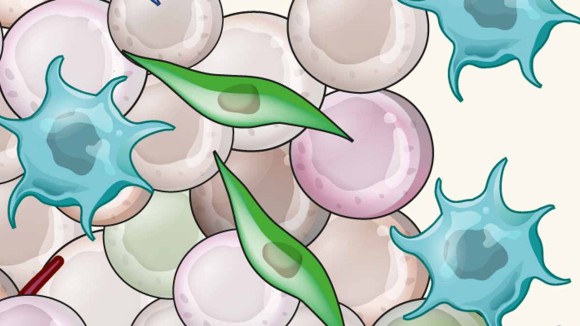
- Collection content
- Collections
- PrimeViews and posters
Research Articles
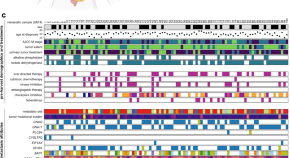
Uveal melanoma immunogenomics predict immunotherapy resistance and susceptibility
Metastatic uveal melanoma is poorly responsive to immune checkpoint inhibition. Here, the authors analyse 100 uveal melanoma metastases using bulk and single cell RNA-seq, TCR analysis, and immune reactivity to show potent, yet, quiescent tumour infiltrating lymphocytes that can be harnessed by adoptive transfer to confer tumour immunity.
- Shravan Leonard-Murali
- Chetana Bhaskarla
- Udai S. Kammula

Neoadjuvant tislelizumab plus stereotactic body radiotherapy and adjuvant tislelizumab in early-stage resectable hepatocellular carcinoma: the Notable-HCC phase 1b trial
The feasibility and efficacy of neoadjuvant immunotherapy for resectable hepatocellular carcinoma (HCC) have been previously suggested. Here the authors report the results of a phase 1b trial of neoadjuvant tislelizumab plus stereotactic body radiotherapy and adjuvant tislelizumab in early-stage resectable HCC.
- Zhongchao Li

Prediction of tumor origin in cancers of unknown primary origin with cytology-based deep learning
Developed on cytology images of hydrothorax and ascites from 57,220 cases at four hospitals, a deep-learning model shows high accuracy in tumor origin prediction and presents prognostic value when patient treatment is consistent with the cancer origin predicted by the model.
- Xiangchun Li
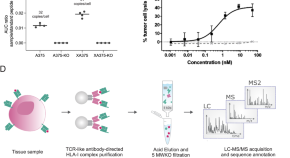
The physiological interactome of TCR-like antibody therapeutics in human tissues
The use of bispecific antibodies to target tumour-specific epitopes presented by MHC molecules in tumour tissue is a promising avenue for cancer immunotherapy. Here the authors use a mass-spectrometry guided analysis to identify off-target MHC-peptide complexes that bind to TCR-like antibodies next to the target peptide, enabling a novel approach to monitoring of antibody specificity during clinical maturation and development.
- Estelle Marrer-Berger
- Annalisa Nicastri
- Nicola Ternette

Single-mitosis dissection of acute and chronic DNA mutagenesis and repair
A single-cell-based approach allows the daughters of a damaged cell to be separately tracked following single mitotic events. This technique highlights the different ways in which ultraviolet light and reactive oxygen species cause mutagenesis.
- Paul Adrian Ginno
- Helena Borgers
- Duncan T. Odom
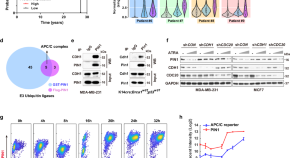
Reciprocal antagonism of PIN1-APC/C CDH1 governs mitotic protein stability and cell cycle entry
Unveiling the regulation of mitotic protein degradation is crucial for cancer therapy. Here, the authors reveal that a reciprocal inhibition of PIN1-APC/C CDH1 controls the cell cycle and mitotic protein degradation, offering a synergistic anti-tumor strategy.
- Shizhong Ke
- Kun Ping Lu


Microenvironmental reorganization in brain tumors following radiotherapy and recurrence revealed by hyperplexed immunofluorescence imaging
Improved imaging techniques are required to help advance our understanding of the complex role of the tumour microenvironment (TME). Here, the authors develop a high-throughput, highly multiplexed tissue visualisation workflow and demonstrate its utility by characterising the response of the TME to radiotherapy in preclinical models of glioblastoma.
- Spencer S. Watson
- Johanna A. Joyce

An oncolytic virus delivering tumor-irrelevant bystander T cell epitopes induces anti-tumor immunity and potentiates cancer immunotherapy
Ye and colleagues show that an oncolytic virus that delivers tumor-irrelevant bystander T cell epitopes to tumor cells can exploit the abundant population of bystander T cells in the tumor for anti-tumor immunity and potentiate cancer immunotherapy.
- Xiangyu Chen
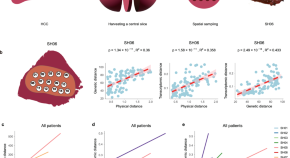
Tumor phylogeography reveals block-shaped spatial heterogeneity and the mode of evolution in Hepatocellular Carcinoma
Hepatocellular carcinomas (HCC) present spatial intratumour heterogeneity (sITH). Here, the authors perform a genomic and phylogenetic analysis of spatially-sampled HCC tumour sections, observe block-shaped sITH, and find ongoing natural selection where ancestral and derived clones spatially compete in the same tumor.
- Xiaodong Liu
- Weiwei Zhai

Integrated proteogenomic and metabolomic characterization of papillary thyroid cancer with different recurrence risks
Papillary thyroid cancers (PTC) generally have good prognosis, but their recurrence rate remains high. Here, the authors use proteogenomics and metabolomics to identify molecular features in PTC tumours and determine PTC subtypes that are associated with prognosis and potential targeted therapies.
- Rongliang Shi

Systematic investigation of chemo-immunotherapy synergism to shift anti-PD-1 resistance in cancer
The design of new combinatorial regimens represents an opportunity to improve response to immune checkpoint inhibitors in patients with cancer. Here the authors computationally model the interaction between chemotherapy and immunotherapy by studying treatment-induced expression changes associated with response to anti-PD-1, identifying chemotherapeutic drugs or small molecule inhibitors that can overcome resistance to anti-PD-1.
- Dhamotharan Pattarayan
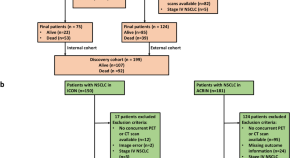
Enhancing NSCLC recurrence prediction with PET/CT habitat imaging, ctDNA, and integrative radiogenomics-blood insights
Predicting recurrence risk in non small cell lung cancer can help to guide treatment decisions. Here, the authors use CT and PET imaging to develop predictive imaging subtypes, which can be integrated with existing ctDNA methods to predict recurrence.
- Sheeba J. Sujit
- Muhammad Aminu
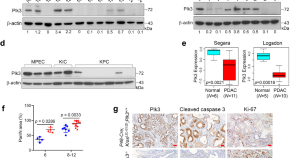
Nardilysin-regulated scission mechanism activates polo-like kinase 3 to suppress the development of pancreatic cancer
Polo-like kinase 3 (Plk3) has a tumor suppressive role through the induction of apoptosis, however, the mechanism underlying its activation is unclear. Here, in pancreatic cancer, the authors show that activation of Plk3 is dependent on its cleavage into p41Plk3, by the metalloendopeptidase nardilysin.
- Jianhua Ling
- Paul J. Chiao

Feasibility of functional precision medicine for guiding treatment of relapsed or refractory pediatric cancers
In an observational study evaluating functional precision medicine in children and adolescents with relapsed or refractory solid and hematologic malignancies, it was feasible to provide personalized treatment recommendations to treating physicians on the basis of genomic profiling and ex vivo drug sensitivity testing within 4 weeks.
- Arlet M. Acanda De La Rocha
- Noah E. Berlow
- Diana J. Azzam

An IL-1β-driven neutrophil–stromal cell axis fosters a BAFF-rich protumor microenvironment in individuals with multiple myeloma
Cupedo and colleagues show that neutrophils promote a tumor-supportive microenvironment via a self-amplifying interaction between neutrophils and bone marrow stromal cells. This scenario creates a promyeloma niche that is difficult to treat despite targeted therapies directed at the myeloma cells.
- Madelon M. E. de Jong
- Cathelijne Fokkema

FOXO1 is a master regulator of memory programming in CAR T cells
The transcription factor FOXO1 has a key role in human T cell memory, and manipulating FOXO1 expression could provide a way to enhance CAR T cell therapies by increasing CAR T cell persistence and antitumour activity.
- Alexander E. Doan
- Katherine P. Mueller
- Evan W. Weber

Molecular patterns of resistance to immune checkpoint blockade in melanoma
A large fraction of patients with melanoma still does not benefit from immune checkpoint blockade, associated with both primary and acquired resistance. Here the authors report genetic and immunological patterns of resistance in patients with melanoma after progression on anti-CTLA4 or anti-PD1 monotherapy.
- Martin Lauss
- Bengt Phung
- Göran Jönsson
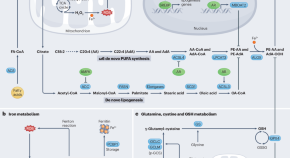
Unlocking ferroptosis in prostate cancer — the road to novel therapies and imaging markers
Ferroptosis induction is a promising new therapeutic strategy for advanced prostate cancer. In this Perspective, the authors discuss the interplay between ferroptosis and metabolism. Current efforts to target ferroptosis and combination therapies in prostate cancer, as well as emerging methods to monitor this process in patients, are also discussed.
- Pham Hong Anh Cao
- Abishai Dominic
- Elavarasan Subramani
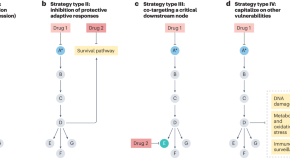
Combinatorial strategies to target RAS-driven cancers
In this Review, Cichowski and colleagues provide an overview of combinatorial strategies designed to treat RAS-driven cancers that are based on four concepts that include vertical pathway inhibition, co-targeting RAS and adaptive survival pathways, co-targeting downstream or converging pathways and capitalizing on other cancer-associated vulnerabilities.
- Naiara Perurena
- Karen Cichowski
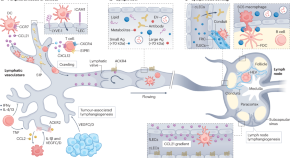
Lymphatic vessels in the age of cancer immunotherapy
Tumour-associated lymphatic growth and remodelling were once viewed as a passive means by which cancer cells could regionally spread to lymph nodes. However, recent data point to an active and contrasting role for lymphatic vessels and their transport in antitumour immune surveillance. In this Review, Karakousi et al. provide a working framework to define this role for the lymphatic system in tumour progression and present avenues for its therapeutic manipulation to improve cancer immunotherapy.
- Triantafyllia Karakousi
- Tenny Mudianto
- Amanda W. Lund

Antiangiogenic–immune-checkpoint inhibitor combinations: lessons from phase III clinical trials
The benefit of combining antiangiogenic agents with immune-checkpoint inhibitors has been demonstrated in pivotal phase III trials across different cancer types, some with practice-changing results; however, other phase III trials have had negative results. The authors of this Perspective discuss the variable outcomes of these trials, considering factors that account for these differences and suggesting future initiatives for improving the outcomes in patients receiving these combinations.
- Hung-Yang Kuo
- Kabir A. Khan
- Robert S. Kerbel
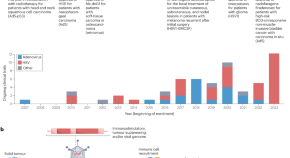
Nucleic acid-based drugs for patients with solid tumours
Nucleic acid-based therapies offer an alternative to traditional cancer treatment modalities, with promising data beginning to emerge. In this Review, the authors describe the design and development of nucleic acid-based therapies administered virally and non-virally, including discussions of the advantages and disadvantage of each approach, as well as the role of patient-specific factors such as the tumour microenvironment, and consider the most promising future research directions.
- Sebastian G. Huayamares
- David Loughrey
- Eric J. Sorscher
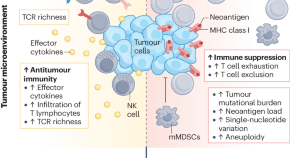
Hallmarks of sex bias in immuno-oncology: mechanisms and therapeutic implications
Sex differences impact various non-reproductive organ cancers, often leading to higher cancer incidence and poorer outcomes in male individuals. In this Perspective article, Xiao, Lee et al. outline the biological factors contributing to sex bias in immuno-oncology, emphasizing the need for future research to offer a fuller understanding of sex disparities in cancer.

The pleiotropic functions of reactive oxygen species in cancer
Papagiannakopoulos and colleagues discuss the roles of reactive oxygen species in cancer and the ways in which redox mechanisms may be exploited for cancer therapy.
- Katherine Wu
- Ahmed Ezat El Zowalaty
- Thales Papagiannakopoulos
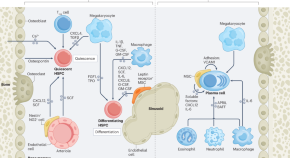
Bone marrow inflammation in haematological malignancies
Haematological malignancies are associated with inflammation in the bone marrow. In this Review, the authors discuss how tumour-associated inflammation affects the normal functions of the bone marrow and supports the outgrowth and survival of malignant cells. Moreover, they describe how the inflammatory changes in the bone marrow differ in myeloid and lymphoid malignancies.
- Lanpeng Chen

Future direction of total neoadjuvant therapy for locally advanced rectal cancer
In this article, the authors discuss the use of total neoadjuvant therapy for locally advanced rectal cancer. They highlight ongoing trials and discuss future treatment options, including the potential use of multi-omics and artificial intelligence to facilitate treatment selection and prediction of response.
- Yoshinori Kagawa
- J. Joshua Smith
- Takayuki Yoshino
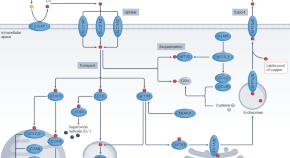
Targeting cuproplasia and cuproptosis in cancer
Copper is an essential trace element with inherent redox properties and fundamental roles in a diverse range of biological processes; therefore, maintaining copper homeostasis is crucial. In this Review, the authors discuss new insights into the mechanisms by which disrupted copper homeostasis contributes to tumour initiation and development, including the recently defined concepts of cuproplasia (copper-dependent cell growth and proliferation) and cuproptosis (a mitochondrial pathway of cell death triggered by excessive copper exposure). They also discuss potential strategies to exploit cuproplasia and cuproptosis for the treatment of cancer.
- Daolin Tang
- Guido Kroemer
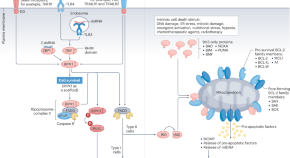
Immunogenic cell death in cancer: targeting necroptosis to induce antitumour immunity
In this Review, Meier et al. discuss the molecular mechanisms of necroptosis, delineate how this form of immunogenic cell death activates antitumour immune responses and explore the opportunities and limitations of targeting necroptosis for anticancer therapy.
- Pascal Meier
- Arnaud J. Legrand

The present and future of bispecific antibodies for cancer therapy
Bispecific antibodies (bsAbs) can mediate therapeutic effects beyond those of natural monospecific antibodies. This Review provides an overview of recent developments in the field of bsAbs for cancer therapy and an outlook into next-generation bsAbs in earlier stages of development.
- Christian Klein
- Ulrich Brinkmann
- Roland E. Kontermann
Fungi in cancer
In this Viewpoint article, we asked three scientists working on the cancer mycobiome to provide their opinions on advancements and challenges and what the future holds for this exciting field of cancer research.
- Jessica Galloway-Peña
- Iliyan D. Iliev
- Florencia McAllister
Cancer burden in low-income and middle-income countries
In this Viewpoint, we asked four experts to discuss the increasing burden of cancer in low- and middle-income countries; they explore the changes that are necessary to improve cancer diagnosis, prevention and treatment within these nations.
- Sharmila Anandasabapathy
- Chite Asirwa
- Chemtai Mungo
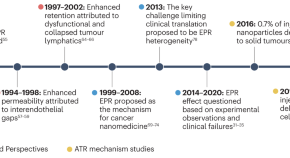
The mechanisms of nanoparticle delivery to solid tumours
The mechanisms of nanoparticle delivery to solid tumours guide the engineering of nanoparticles for cancer applications. This Review discusses two contrasting nanoparticle delivery mechanisms, the enhanced permeability and retention effect and the active transport and retention principle, and their implications for the design of cancer nanomedicines.
- Luan N. M. Nguyen
- Warren C. W. Chan
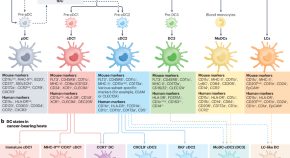
Dendritic cells as orchestrators of anticancer immunity and immunotherapy
Dendritic cells (DCs) are antigen-presenting cells that function at the interface between innate and adaptive immunity, thereby acting as key mediators of antitumour immune responses and immunotherapy efficacy. In this Review, the authors outline the emerging complexity of intratumoural DC states that is being revealed through single-cell analyses as well as the contributions of different DC subsets to anticancer immunity and the activity of immune-checkpoint inhibitors. The authors also discuss advances in the development of DC-based cancer therapies and considerations for their potential combination with other anticancer therapies.
- Ignacio Heras-Murillo
- Irene Adán-Barrientos
- David Sancho
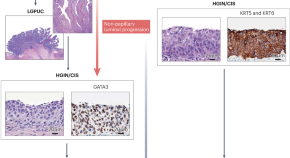
Molecular profile of bladder cancer progression to clinically aggressive subtypes
In this Review, the authors describe the molecular profile of bladder cancer progression associated with the subtypes of this disease and comment on their potential diagnostic, prognostic and therapeutic importance.
- Charles C. Guo
- Sangkyou Lee
- Bogdan Czerniak
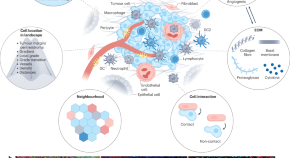
Multiplex protein imaging in tumour biology
In this Review, de Souza et al. discuss how advances in the ability to image protein markers at high-plex, at single-cell and even subcellular resolution, are expanding our understanding of tumour biology and clinical outcomes, and outline the future promise of combining such multiplex protein imaging methods with other forms of spatial omics.
- Natalie de Souza
- Bernd Bodenmiller
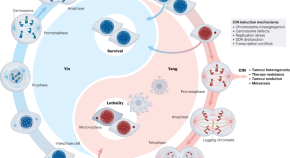
The yin and yang of chromosomal instability in prostate cancer
Chromosomal instability is a hallmark of advanced prostate cancer. In this Review, the authors discuss the biological causes and paradoxical consequences of chromosomal instability, its potential clinical role in the stratification of prostate cancer aggressiveness and the development of novel treatment strategies.
- Marc Carceles-Cordon
- Jacob J. Orme
- Veronica Rodriguez-Bravo
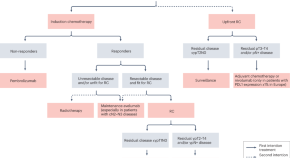
Management of patients with muscle-invasive bladder cancer with clinical evidence of pelvic lymph node metastases
Muscle-invasive bladder cancer with clinically positive pelvic lymph nodes is a particular situation at the interface between localized and metastatic disease. In this Review, the authors discuss the advances and challenges of currently available strategies for the diagnosis and treatment of patients with muscle-invasive bladder cancer with clinically positive pelvic lymph nodes.
- Elisabeth Grobet-Jeandin
- Louis Lenfant
- Thomas Seisen
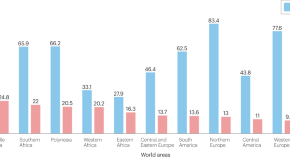
The complex interplay of modifiable risk factors affecting prostate cancer disparities in African American men
African American men are disproportionately affected by prostate cancer in the USA. In this Review, the authors discuss the complex interplay of modifiable risk factors that might underlie the glaring prostate cancer disparities observed.
- Jabril R. Johnson
- Nicole Mavingire
- Rick A. Kittles
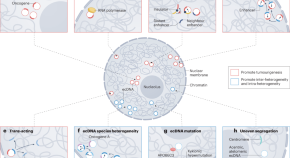
Extrachromosomal DNA in cancer
Extrachromosomal DNA (ecDNA) is now accepted as a major contributor to cancer pathogenesis. In this Review, Yan, Mischel and Chang highlight the recent advancements in ecDNA research, providing new insights into the biogenesis and maintenance of ecDNA, as well as its role in altering gene expression and promoting tumour heterogeneity.
- Xiaowei Yan
- Paul Mischel
- Howard Chang

Natural killer cell therapies
This Review explores in detail the complexity of NK cell biology in humans and highlights the role of these cells in cancer immunity.
- Eric Vivier
- Lucas Rebuffet
- Valeria R. Fantin
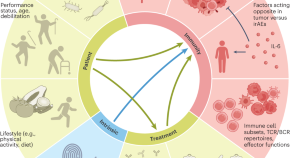
Clinical and translational attributes of immune-related adverse events
Suijkerbuijk et al. summarize the clinical manifestation and classification of immune-related adverse events, discuss the immunopathogenesis of immune-related adverse events and provide key insights into their management and future therapeutic directions.
- Karijn P. M. Suijkerbuijk
- Mick J. M. van Eijs
- Alexander M. M. Eggermont
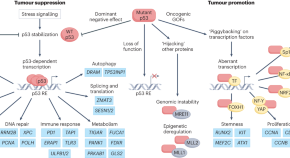
Translating p53-based therapies for cancer into the clinic
Although p53 was once considered undruggable, in this Review, Peuget et al. discuss the progress made in targeting p53 as a form of cancer therapy with approaches ranging from restoration of mutant p53 function to inhibition of the negative regulator of p53, MDM2, as well as newer strategies, including p53-based mRNA vaccines and antibodies.
- Sylvain Peuget
- Xiaolei Zhou
- Galina Selivanova
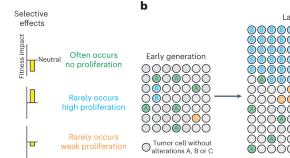
Aneuploidy and complex genomic rearrangements in cancer evolution
Van Loo and colleagues review the mechanistic underpinnings of large genomic alterations and their roles in tumor development and evolution.
- Toby M. Baker
- Peter Van Loo
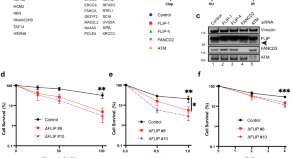
FLIP(C1orf112)-FIGNL1 complex regulates RAD51 chromatin association to promote viability after replication stress
Recombination is essential for life. Here, the authors characterize FLIP as a novel regulator of the key recombination protein RAD51’s functions. FLIP loss caused marked sensitivity to DNA damage, increased DNA breakage and defective replication.
- Jessica D. Tischler
- Hiroshi Tsuchida
- Richard O. Adeyemi
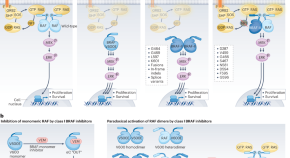
BRAF — a tumour-agnostic drug target with lineage-specific dependencies
Various BRAF alterations are found and function as oncogenic drivers across diverse cancer types. BRAF inhibitor-based therapy has improved outcomes for patients with cancers harbouring BRAF V600 mutations, although resistance develops in most, and the current inhibitors are not effective against other types of BRAF alterations. In this Review, the authors describe the mechanisms underlying oncogenic BRAF signalling, as well as pan-cancer and lineage-specific mechanisms of intrinsic, adaptive and acquired resistance to BRAF inhibitors. They also discuss novel RAF inhibitors and drug combinations designed to overcome these resistance mechanisms and/or expand the applicability of molecularly targeted therapy to a broader range of BRAF -mutant cancers.
- Aphrothiti J. Hanrahan
- David B. Solit
News & Commentary
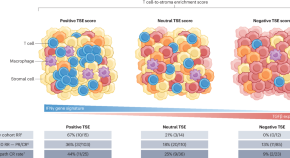
Lighting the torch: intratumoural T cell-to-stroma enrichment score as a predictor of immunotherapy response in urothelial carcinoma
T cell infiltration in the tumour microenvironment (TME) is a prerequisite for sustained antitumour immune responses. However, identifying predictive biomarkers that quantify T cell infiltration and the presence of proinflammatory TMEs associated with immune-checkpoint inhibitor (ICI) response for clinical implementation has proved challenging. Here, we highlight a study that validates a T cell-to-stroma enrichment score generated from RNA sequencing data as a novel biomarker for ICI response in patients with urothelial carcinoma.
- David H. Aggen
- Jonathan E. Rosenberg
A CAF subpopulation promotes LVI in early-stage bladder cancer
- Maria Chiara Masone
The case for centralization of care in penile cancer — respecting geographical needs
Centralization of care for penile cancer has been underscored in the 2023 updated EAU–ASCO guidelines. Expertise consolidation enhances patient care, addressing penile cancer complexities from diagnosis to treatment. Centralization initiatives, like the European Reference Networks, and dedicated scientific societies have crucial roles in guiding centralized care pathways to ultimately improve patient outcomes.
- Giuseppe Basile
- Andrea Necchi
- Peter A. S. Johnstone

Targeting immunogenic cell stress and death for cancer therapy
Immunogenic cell death (ICD) is crucial for the elicitation of anticancer immune responses by therapy, but the successful development of ICD-inducing treatments is hindered by various obstacles. This Review provides an overview of the core mechanisms of ICD, discusses obstacles to the development of novel ICD modulators and assesses established and innovative therapeutic approaches for ICD induction.
- Lorenzo Galluzzi
- Emma Guilbaud
- Francesco M. Marincola

Programming immune escape
In a recent study published in Nature , Goto et al. explore mechanisms of immune evasion in early colorectal cancers and adenomas and identify SOX17 to be crucial for immune escape through suppression of interferon-γ signalling.
- Daniela Senft
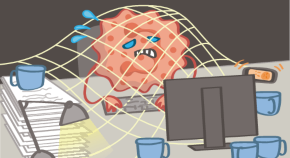
NET-working under stress
In this recent study, He et al. establish that chronic stress promotes metastasis through stress-induced formation of neutrophil extracellular traps (NETs).
- Gabrielle Brewer

Biological age surges in survivors of childhood cancer
People who survived paediatric cancers age faster and are at higher risk of early death.
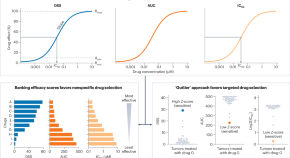
Functional precision medicine for pediatric cancers
A small, prospective clinical study shows that ex vivo drug screening of pediatric cancer samples can identify effective therapeutic options. If validated, these findings could herald a new approach to precision medicine in this setting.
- M. Emmy M. Dolman
- Paul G. Ekert
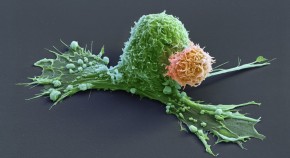
How to supercharge cancer-fighting cells: give them stem-cell skills
The bioengineered immune players called CAR T cells last longer and work better if pumped up with a large dose of a protein that makes them resemble stem cells.
- Sara Reardon
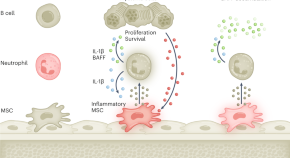
The enduring neutrophil–stroma dance of multiple myeloma
Inflammatory memory cues initiated by neutrophils and bone marrow stroma suggest potential therapeutic targets for the treatment of multiple myeloma.
- Daniela Cerezo-Wallis
- Iván Ballesteros

Routes to second cancers
Sánchez-Guixé et al. investigated the possible routes to second malignancies in survivors of paediatric cancer by studying four such clinical cases.
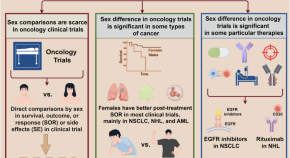
Reporting outcome comparisons by sex in oncology clinical trials
Many aspects of human health and disease are influenced by sex as a biological variable and gender as a social construct. A recent study from Nature Communications reported the landscape of outcome comparisions by sex in oncology clinical trials, highlighting the need for a more thorough reporting of sex differences.
- Yuning Wang
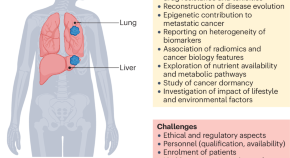
Global post-mortem tissue donation programmes to accelerate cancer research
Metastatic cancer represents the main cause of death in patients with cancer, but metastasis research is hindered by the limited availability of metastatic samples. In this Comment, Desmedt and Carey highlight the opportunities and challenges of post-mortem tissue donation programmes, which represent a complementary and attractive solution to overcome many of the hurdles in metastasis research.
- Christine Desmedt
- Lisa A Carey
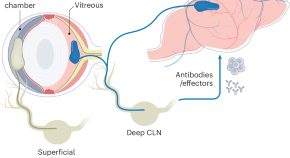
An immunological window to the brain
The eye and the brain are both recognized as immune-privileged sites. Research now indicates that responses in the eye mirror those in the central nervous system (CNS), offering major implications for the treatment of CNS cancers and infections.
- James T. Walsh
- Jonathan Kipnis
Pembrolizumab plus chemoradiotherapy effective in locally advanced cervical cancer
- Peter Sidaway
Neutrophil subsets
- Ioana Staicu
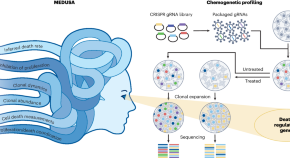
The death gaze of MEDUSA
Chemogenetic profiling can reveal genetic determinants that coordinate phenotypic responses to therapeutics, along with predicting potential pathways of resistance. A new analytical method for evaluating chemogenetic profiles reveals contributions from death-regulatory genes.
- Jesse D. Gelles
- Jerry Edward Chipuk
Mirvetuximab soravtansine has activity in platinum-sensitive epithelial ovarian cancer
- Diana Romero
Enhancing diagnostic precision in liver lesion analysis using a deep learning-based system: opportunities and challenges
A recent study reported the development and validation of the Liver Artificial Intelligence Diagnosis System (LiAIDS), a fully automated system that integrates deep learning for the diagnosis of liver lesions on the basis of contrast-enhanced CT scans and clinical information. This tool improved diagnostic precision, surpassed the accuracy of junior radiologists (and equalled that of senior radiologists) and streamlined patient triage. These advances underscore the potential of artificial intelligence to enhance hepatology care, although challenges to widespread clinical implementation remain.
- Jeong Min Lee
- Jae Seok Bae
IL-13Rα2-targeted CAR T cells show promise in patients with recurrent high-grade gliomas
- David Killock
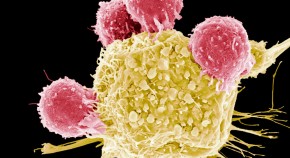
Cutting-edge CAR-T cancer therapy is now made in India — at one-tenth the cost
The treatment, called NexCAR19, raises hopes that this transformative class of medicine will become more readily available in low- and middle-income countries.
- Smriti Mallapaty
A new standard of care for advanced-stage urothelial carcinoma
Identification of dynamic microbiota signatures in patients with melanoma receiving icis: opportunities and challenges.
The composition of the gut microbiota has emerged as a tumour-extrinsic factor that modulates response to immune-checkpoint inhibitors (ICIs), although the lack of consistency in microbiota signatures across studies has limited their value as reliable biomarkers. Herein, we discuss a recent study in which longitudinal microbiome profiling identified several taxa that are persistently enriched in patients with melanoma and a favourable response to ICIs.
- Saman Maleki Vareki
- Diwakar Davar

‘Woah, this is affecting me’: why I’m fighting racial inequality in prostate-cancer research
Olugbenga Samuel Oyeniyi sought a career with a stronger public-health focus after learning that Black men are twice as likely as white men to get prostate cancer.
- Jacqui Thornton
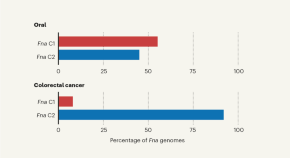
Whittling down the bacterial subspecies that might drive colon cancer
Understanding the factors that drive formation of particular types of cancer can aid efforts to develop better diagnostics or treatments. The identification of a bacterial subspecies with a connection to colon cancer has clinical relevance.
- Cynthia L. Sears
- Jessica Queen

A waste product’s unexpected role in wasting
The mechanisms that drive cancer cachexia are unclear. Adipocyte activation of GPR81 by high levels of lactate is now shown to drive adipose tissue browning, thermogenesis and a loss of body weight in mouse models of cancer.
- Jack D. Sanford
- Marcus D. Goncalves
Methods & Protocols
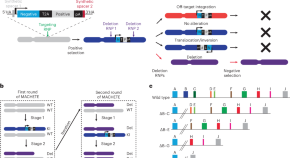
Engineering megabase-sized genomic deletions with MACHETE (Molecular Alteration of Chromosomes with Engineered Tandem Elements)
The authors introduce MACHETE (molecular alteration of chromosomes with engineered tandem elements), a clustered regularly interspaced short palindromic repeats directed Cas9-based system for the efficient deletion of megabase-sized genomic regions.
- Francisco M. Barriga
- Scott W. Lowe
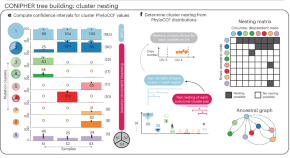
CONIPHER: a computational framework for scalable phylogenetic reconstruction with error correction
CONIPHER is a computational framework for accurately inferring subclonal structure and the phylogenetic tree from multisample tumor sequencing, accounting for both copy number alterations and mutation errors.
- Kristiana Grigoriadis
- Ariana Huebner
- Nicholas McGranahan
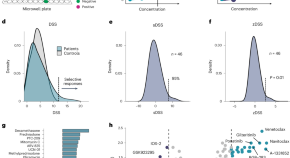
Robust scoring of selective drug responses for patient-tailored therapy selection
This protocol presents a computational approach to scoring drug sensitivity that integrates multiple dose–response parameters into a single response metric and identifies differences in drug-response patterns between cancer cells and healthy control cells.
- Yingjia Chen
- Tero Aittokallio
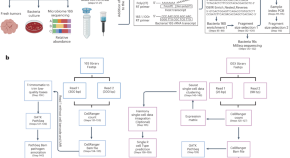
INVADEseq to identify cell-adherent or invasive bacteria and the associated host transcriptome at single-cell-level resolution
Invasion–adhesion-directed expression sequencing adapts the 10x Genomics 5′ single-cell RNA sequencing protocol to enable generation of bacterial and eukaryotic DNA libraries to identify adherent or invasive bacteria and the associated host transcriptome at a single-cell level.
- Jorge Luis Galeano Niño
- Susan Bullman
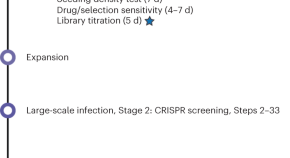
Genome-wide pooled CRISPR screening in neurospheres
The authors present a protocol for genome-wide clustered regularly interspaced short palindromic repeat screening of three-dimensional neurospheres.
- Amy B. Goodale
- David E. Root
Newly diagnosed AML: quizartinib improves OS

Promising results for antisense RNA therapy in mouse models of diffuse midline glioma
- Caroline Barranco
Serum tumour markers for testicular cancer recurrence
The current serum tumour markers α-fetoprotein, human chorionic gonadotrophin, and lactate dehydrogenase show limited value for testicular cancer relapse detection. A recent study highlights that false-positive elevations in follow-up monitoring are common and, conversely, many patients do not have elevations despite proven relapse. These findings highlight the potential for circulating microRNAs to be used as improved biomarkers for relapse detection.
- Matthew J. Murray
- Cinzia G. Scarpini
- Nicholas Coleman
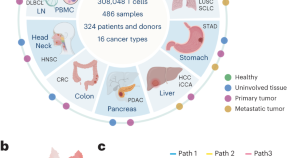
Stress response in tumor-infiltrating T cells is linked to immunotherapy resistance
A newly composed single-cell transcriptomic atlas of tumor-infiltrating T cells across 16 cancer types revealed previously undescribed T cell states and heterogeneity. A unique T cell stress response state, T STR , was linked to immunotherapy resistance. Our high-resolution T cell reference maps, web portal, and annotation tool can assist efforts to develop T cell therapies.
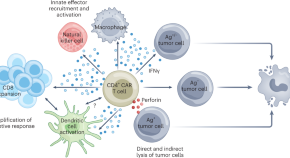
CD4 + CAR T cells — more than helpers
Therapeutic products containing CD8 + and CD4 + T cells expressing CARs are effective at inducing remission in patients with cancer. How CD4 + CAR T cells contribute to the anti-tumor response has not been well established. A study uses syngeneic models and in vivo imaging to glean mechanistic insights into how CD4 + T cells target tumors.
- M. Eric Kohler
- Terry J. Fry
Venetoclax–obinutuzumab combinations are effective in fit patients with CLL
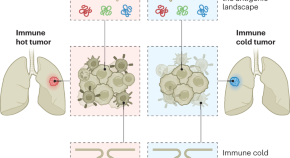
Taking the temperature of lung cancer antigens
Antigen presentation is fundamental to anti-tumor immunity, but our understanding of the physiological and molecular inputs to the process in different contexts remains limited. Two new studies explore the contribution of cell-intrinsic proteolytic mechanisms and cell-extrinsic hot and cold tumor microenvironments in shaping the antigenic landscape in lung cancer.
- Paul A. Stewart
- Alex M. Jaeger
A skull bone marrow niche for antitumour neutrophils in glioblastoma
A preprint by Lad et al. shows that tumour-associated neutrophils in glioblastoma originate from skull bone marrow and acquire an antigen-presenting cell phenotype intratumorally in the presence of local T cells.
- Austeja Baleviciute
Impaired RNA clearance
In this study, Insco et al. find patient-specific CDK13 mutations to impede RNA surveillance, leading to the accumulation and translation of prematurely terminated RNAs that drive malignancy in melanoma models.
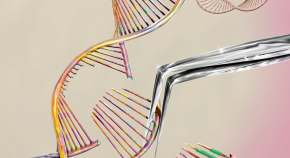
Peptide-mediated CRISPR engineering of cells
An article in Nature Biomedical Engineering reports a simple and hardware-independent peptide-mediated delivery method for the CRISPR-mediated engineering of T cells.
- Nesma El-Sayed Ibrahim
Quick links
- Explore articles by subject
- Guide to authors
- Editorial policies

IMAGES
COMMENTS
According to the International Agency for Research on Cancer (IARC), in 2020 there were approximately 19.3 million new cases of cancer, and 10 million deaths by this disease, 6 while 23.8 million cases and 13.0 million deaths are projected to occur by 2030. 73 In this regard, it is clear the increasing role that environmental factors ...
F. Castinetti and F. Borson-ChazotN Engl J Med 2023;389:1916-1918. Although medullary thyroid cancer accounts for less than 5% of thyroid cancers, it deserves attention because of its phenotypic ...
Nature Cancer publishes research, reviews and comment across the spectrum of the cancer field, from fundamental preclinical, to translational and clinical work.
Research articles. Filter By: Article Type. All. All; Analysis (10) ... cells can exploit the abundant population of bystander T cells in the tumor for anti-tumor immunity and potentiate cancer ...
Advancing Cancer Therapy. Nature Cancer 2 , 245-246 ( 2021) Cite this article. Cancer therapies have evolved considerably in recent decades, substantially improving the quality of life and ...
Cancer is a disease of altered signaling and metabolism, causing uncontrolled division and survival of transformed cells. A host of molecules, factors, and conditions have been designated as underlying causes for the inception and progression of the disease. An enormous amount of data is available, system-wide interaction networks of the genes ...
The growing global burden of cancer is rapidly exceeding the current cancer control capacity. More than 19 million new cancer cases were diagnosed in 2020 worldwide, and 10 million people died of cancer.1 By 2040, that burden is expected to increase to around 30 million new cancer cases annually and 16 million deaths from cancer according to the Global Cancer Observatory.
The World Cancer Research Fund (WCRF) and IARC have reviewed the carcinogenic risk of foods and nutrients using systematic reviews of the evidence and evaluation by expert panels. As with much nutritional research the topic is complex, but the WCRF and IARC have identified nutritional factors with convincing evidence or probable evidence of ...
Cancer incidence increased in people in prisons in England between 1998 and 2017, with patients in prison less likely to receive curative treatments and having lower overall survival than the general population. The association with survival was partly explained by accounting for differences in receipt of curative treatment and adjustment for diagnosis route.
Cancer Research publishes impactful original studies, reviews, and opinion pieces of high significance to the broad cancer research community. Cancer Research seeks manuscripts that offer conceptual or technological advances leading to basic and translational insights into cancer biology. Read More About the Journal.
Cancer, an international interdisciplinary journal of the American Cancer Society, publishes high-impact, peer-reviewed original articles and solicited content on the latest clinical research findings. Spanning the breadth of oncology disciplines, Cancer delivers something for everyone involved in cancer research, risk reduction, treatment, and ...
New research suggests that fungi in the gut may affect how tumors respond to cancer treatments. In mice, when bacteria were eliminated with antibiotics, fungi filled the void and impaired the immune response after radiation therapy, the study found. FDA Approves Belumosudil to Treat Chronic Graft-Versus-Host Disease.
Read the latest Research articles from Nature Cancer. ... Research articles. Filter By: Article Type. All. All; Analysis (1) Article (67) Brief Communication (3) Matters Arising (2) Resource (3)
Posted: January 20, 2023. Many young women who are diagnosed with early-stage breast cancer want to become pregnant in the future. New research suggests that these women may be able to pause their hormone therapy for up to 2 years as they try to get pregnant without raising the risk of a recurrence in the short term.
The American Cancer Society (ACS) has helped make possible almost every major cancer breakthrough since 1946. Since then, we've invested more than $5 billion in cancer research, making us the largest nonprofit funder of cancer research in the United States, outside of the federal government. We remain committed to finding more - and better ...
Nearly 750,000 cases of cancer diagnosed worldwide in 2020, or 4%, can be attributed to alcohol consumption, according to a new study. While heavy drinking accounted for most cases, light and moderate drinking accounted for a modest amount. Advancing Cancer Prevention: A Conversation with NCI's Dr. Philip Castle.
After more than a decade studying a rare eye cancer that produces some of the hardest-to-fight tumors, researchers from University of Pittsburgh Medical Center have found a treatment that works on ...
Cancer is a global health problem responsible for one in six deaths worldwide. Treating cancer has been a highly complex process. Conventional treatment approaches, such as surgery, chemotherapy, and radiotherapy, have been in use, while significant advances are being made in recent times, including stem cell therapy, targeted therapy, ablation therapy, nanoparticles, natural antioxidants ...
This research was funded by Cancer Research UK, the UK Medical Research Council, the Wellcome Trust, an ERC Advanced Investigator grant, a Wellcome Investigator Award, a prize from the Louis ...
Nature Reviews Cancer publishes a dynamic and accessible mix of Reviews, Perspectives, Progress and Highlight articles on the most important primary research ...
Her work earned her a place with the World Cancer Research Fund and the American Institute for Cancer Research, which tasked her and other experts with developing recommendations for reducing the risk of developing different cancers. Successful, she joined the American Cancer Society in its attempt to pare down recommendations that had been in ...
Scottish terriers seemed to get more cancer than other small dog breeds. "Terriers in general get more cancer than expected for their size," Nunney said. In general, however, the study supports the idea that size is a major risk factor for cancer. However, the very largest breeds, such as great Danes, have less cancer than medium-sized breeds.
An NCI-supported study called OPTIMUM, part of the Cancer Moonshot, was launched to improve the care of people with brain tumors called low-grade glioma in part by bringing them into glioma-related research. Treating craniopharyngioma often requires surgery, radiation therapy, or both.
Organoid biology will further develop with a goal of translating the research into personalized therapy. These research areas may result in the creation of new cancer treatments in the future. Keywords: exosomes, immunotherapy, microbiome, organoid. Cancer research has made remarkable progress and new discoveries are beginning to be made.
OU Health Stephenson Cancer Center today announced its expansion to the University of Oklahoma-Tulsa, marking a significant milestone in providing access to research-driven cancer care to northeastern Oklahoma residents. As the state's sole National Cancer Institute (NCI)-designated cancer center, Stephenson Cancer Center's expansion will offer local patients unparalleled access to advanced ...
A new wave of research is unpicking the relationship between cancer and neurons — and looking for ways to stop the crosstalk. ... Related Articles. Cancer cells have 'unsettling' ability to ...
Johnson covers research in cancer, addiction and more for The Associated Press. She is a member of AP's health and science team. twitter mailto The Associated Press is an independent global news organization dedicated to factual reporting. Founded in 1846, AP today remains the most trusted source of fast, accurate, unbiased news in all ...
Breast cancer incidence and death rates have increased over the last three decades. Between 1990 and 2016 breast cancer incidence has more than doubled in 60/102 countries (e.g., Afghanistan, Philippines, Brazil, Argentina), whereas deaths have doubled in 43/102 countries (e.g., Yemen, Paraguay, Libya, Saudi Arabia) .
The Nature Portfolio editors who handle cancer primary research, methods, protocols and reviews bring you the latest articles, covering all aspects from disease mechanisms to therapeutic ...
Members of the public last week welcomed the king's return to some duties, and hailed him for raising awareness about cancer, which will affect one in two people, according to Cancer Research UK.